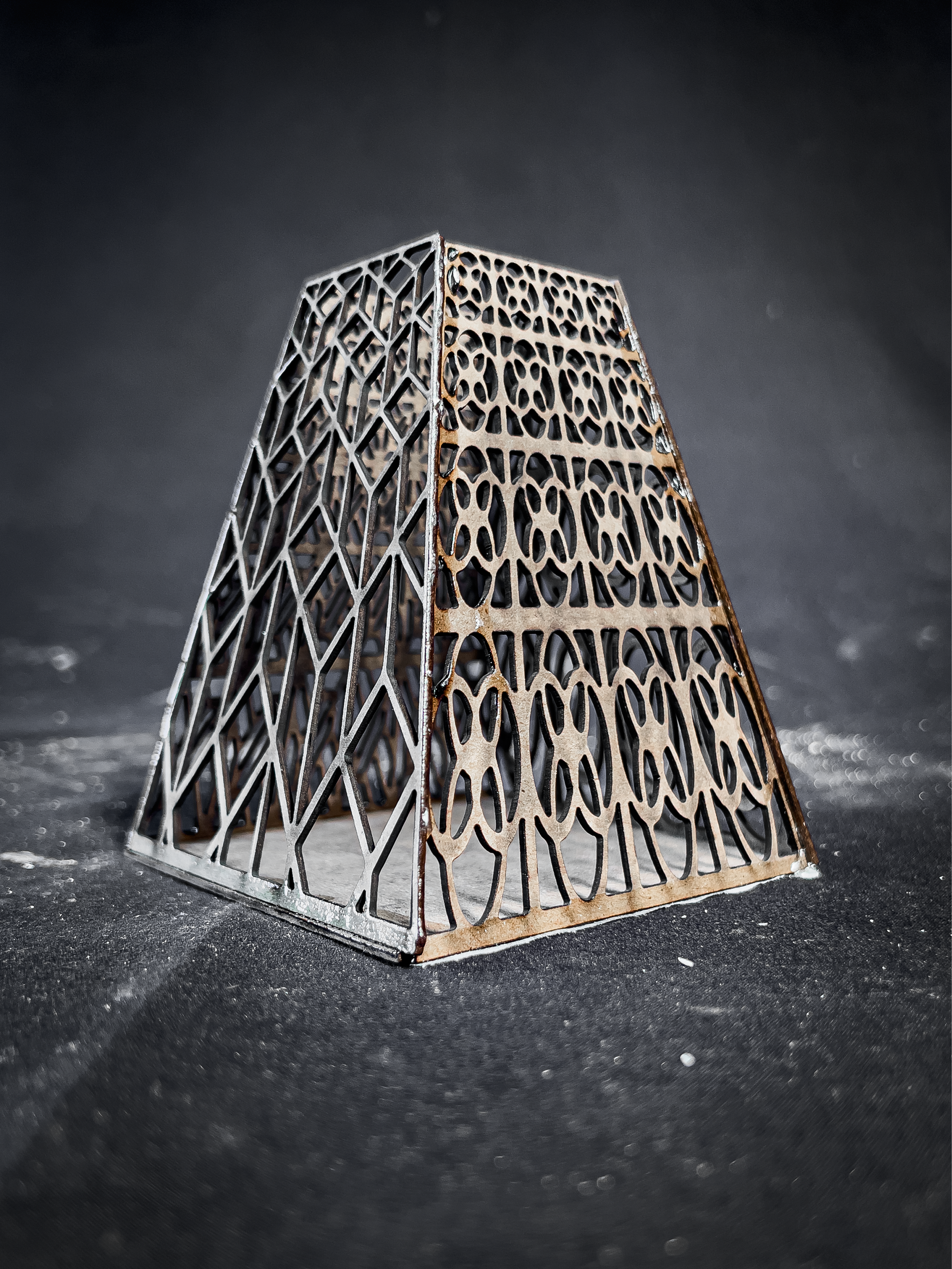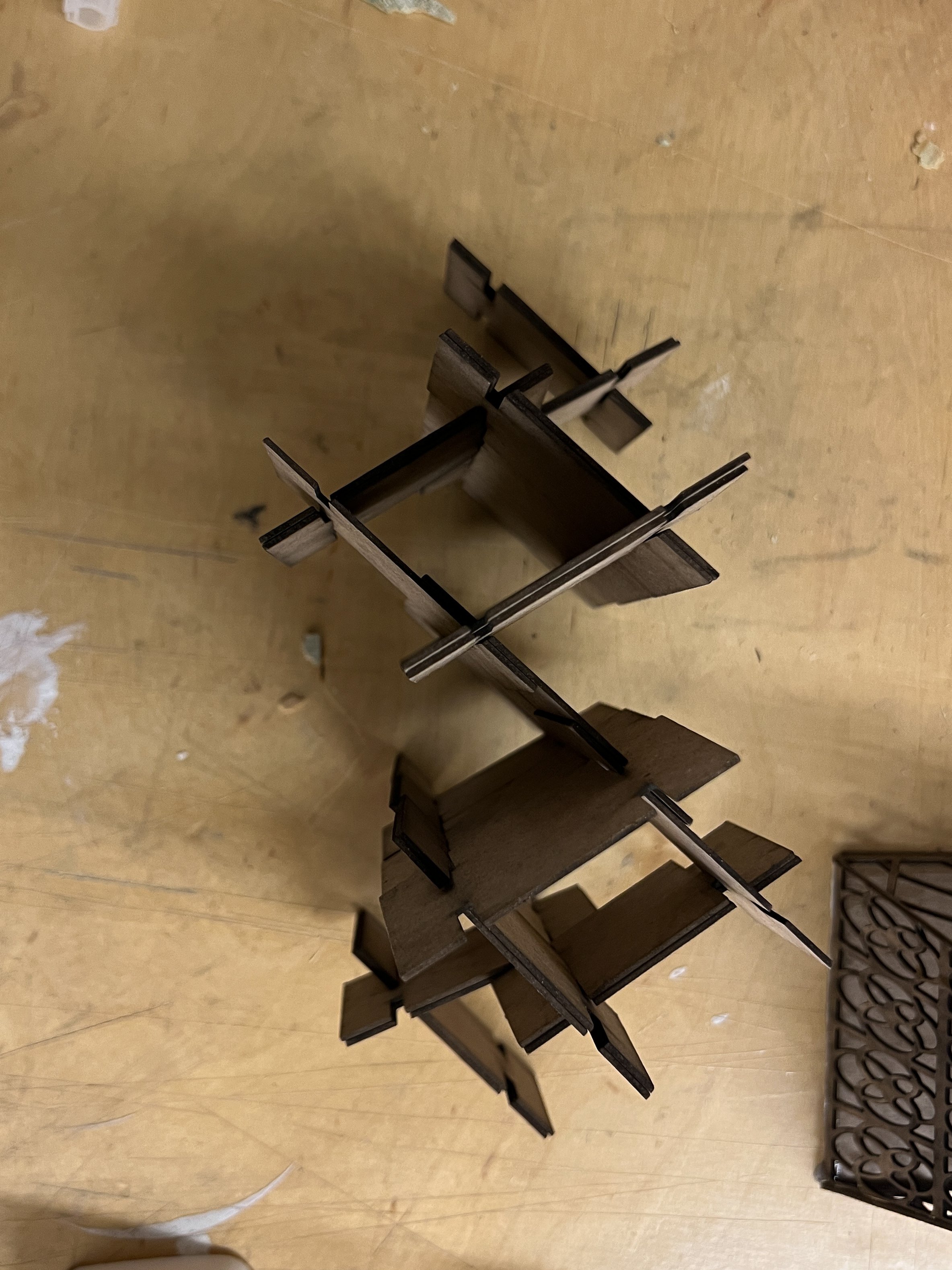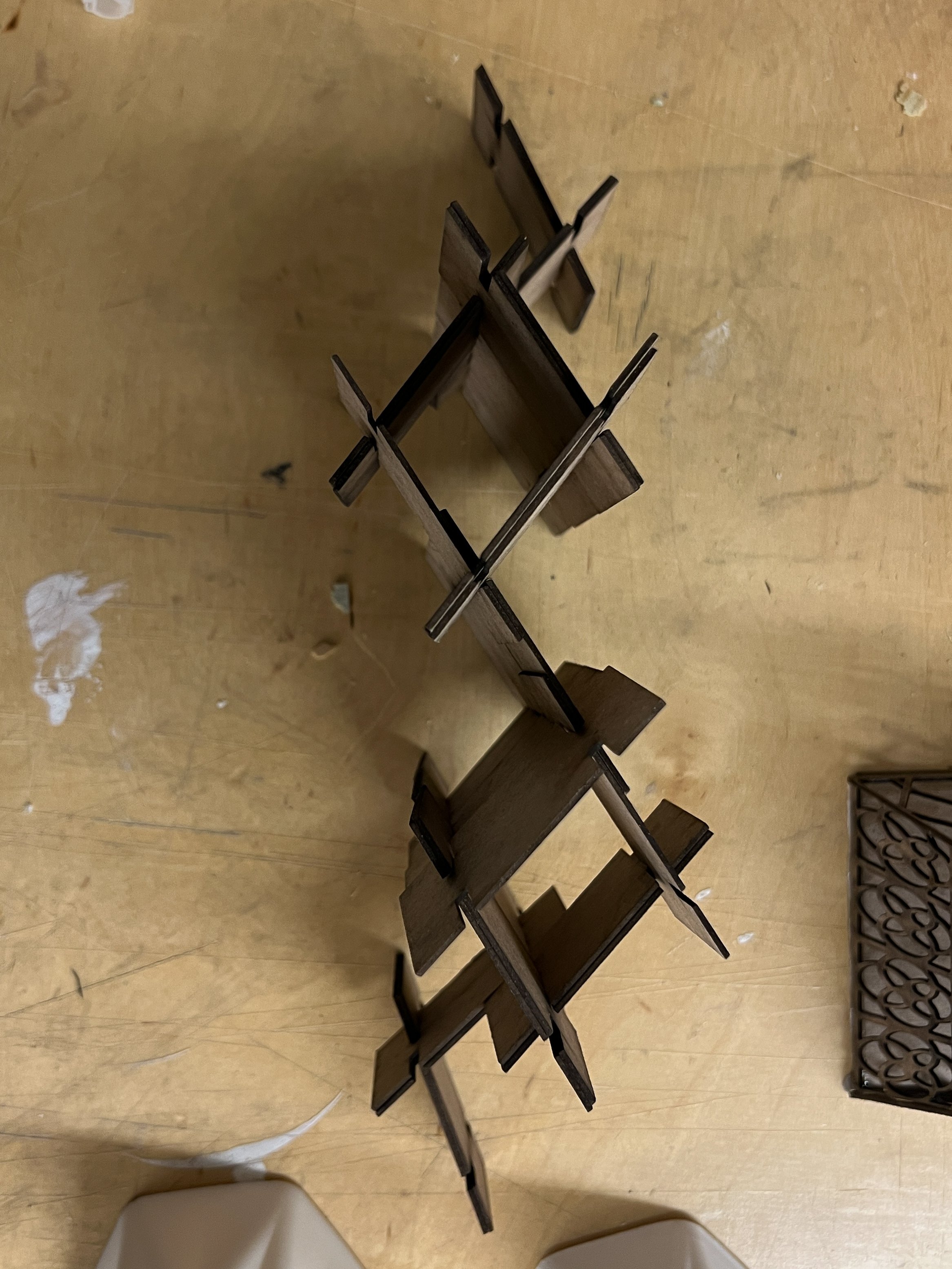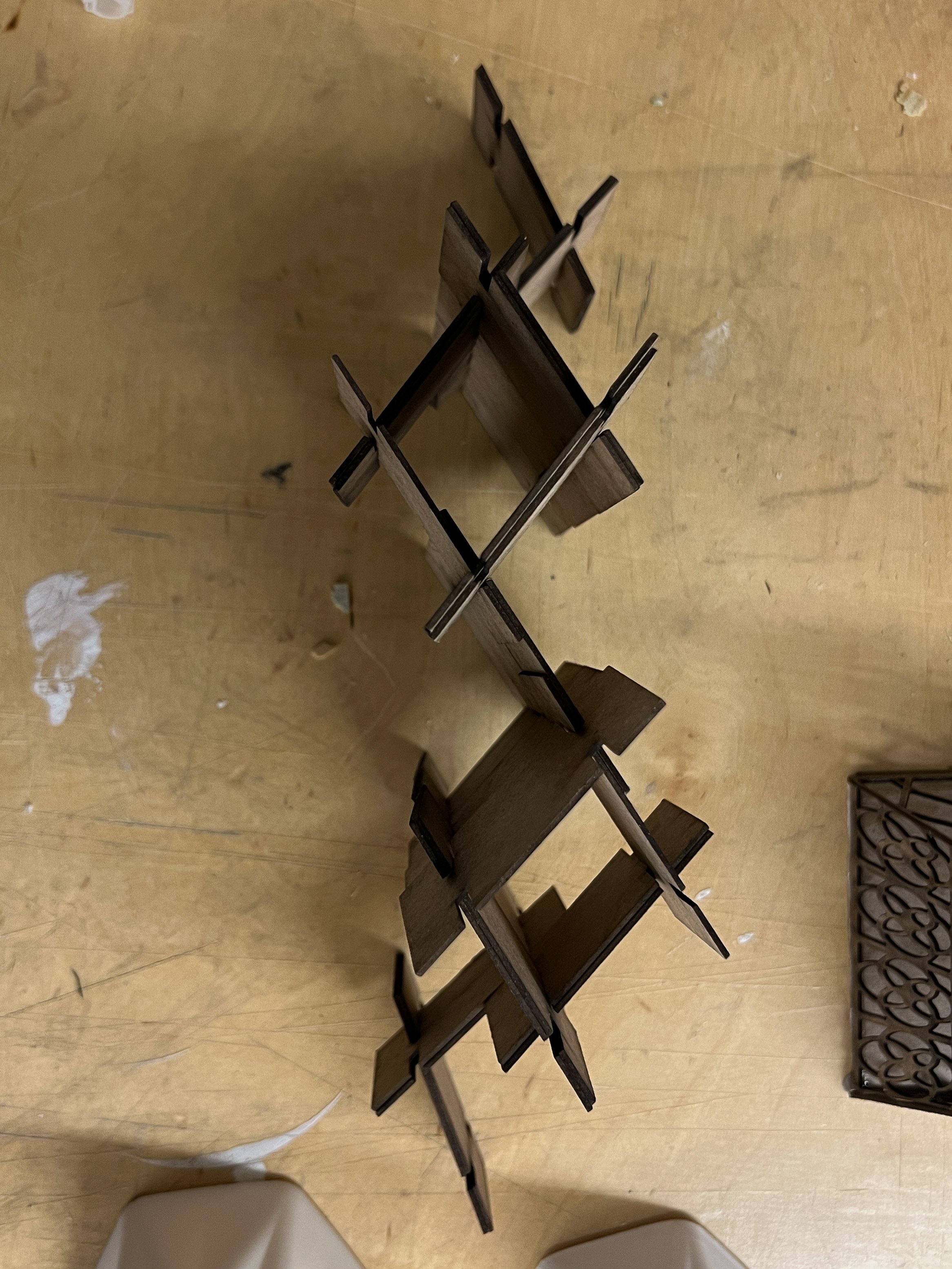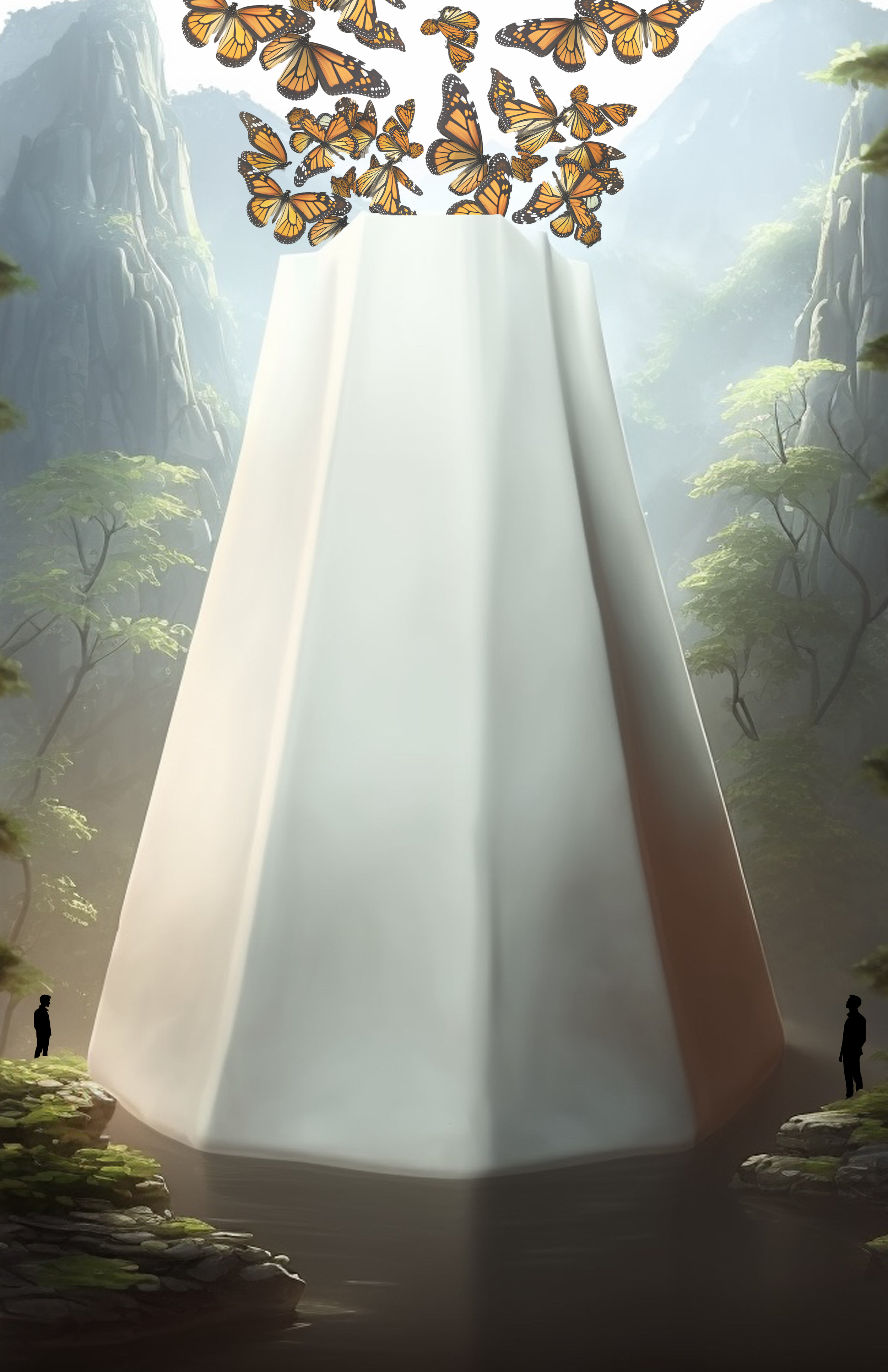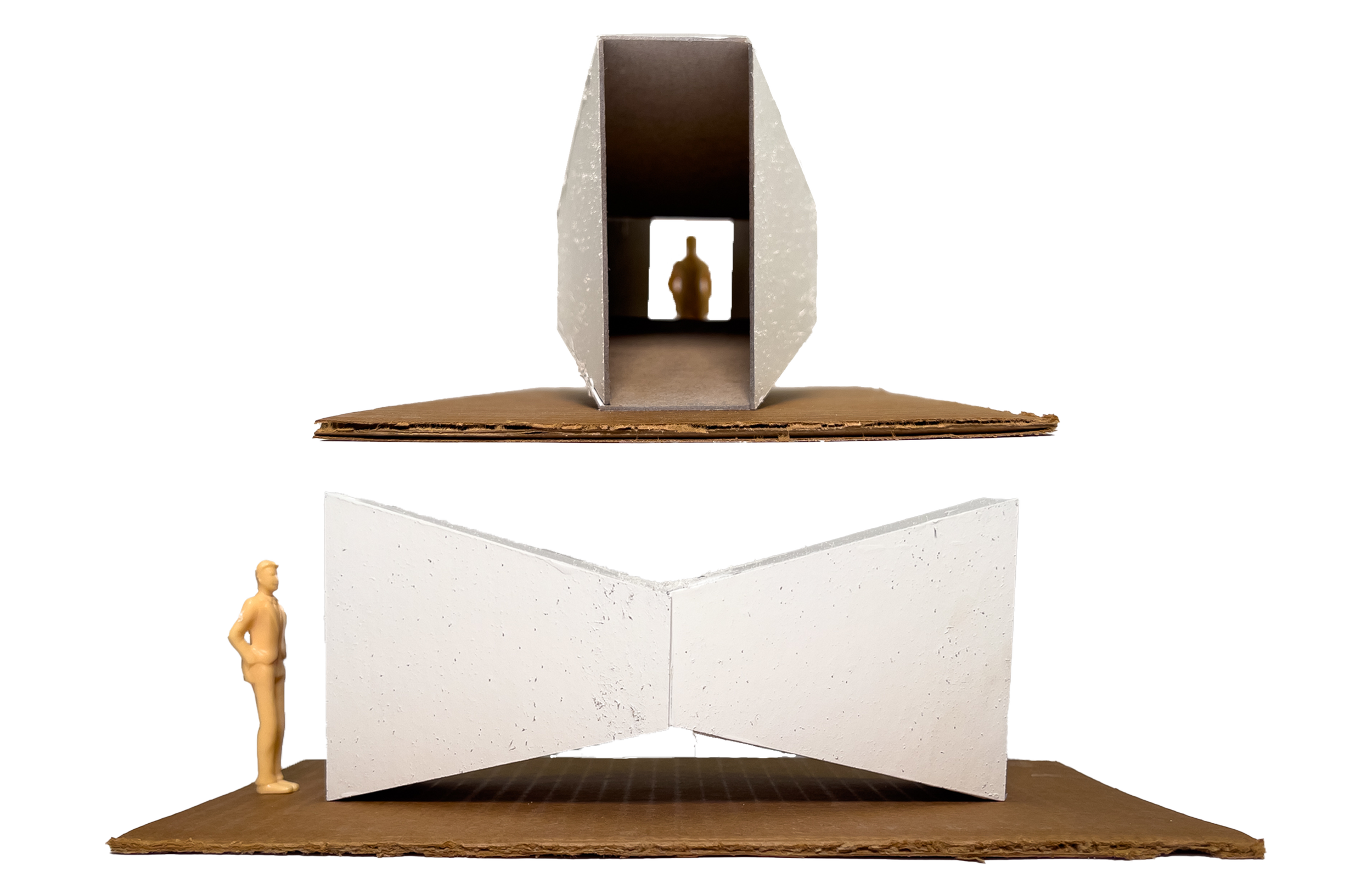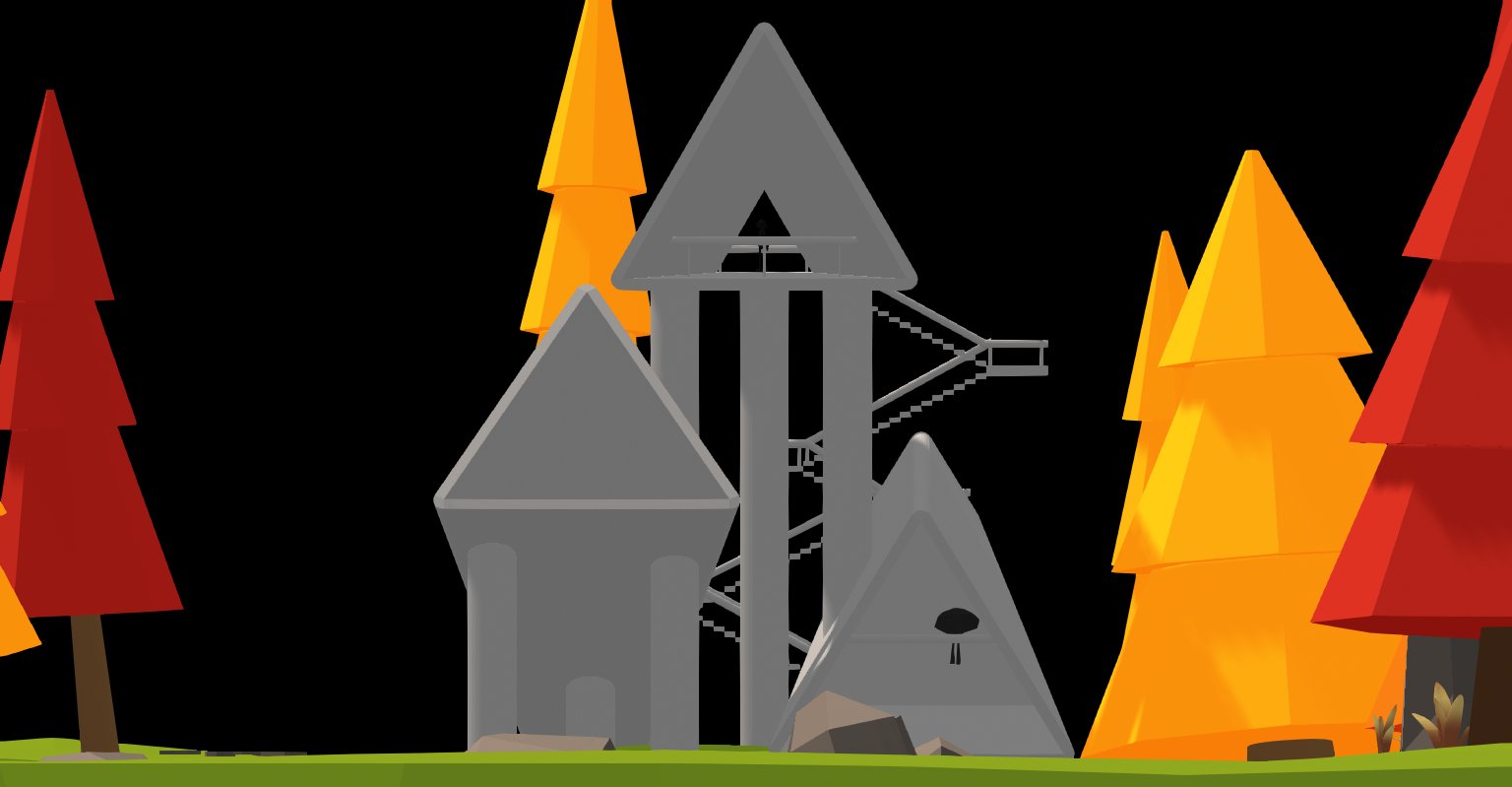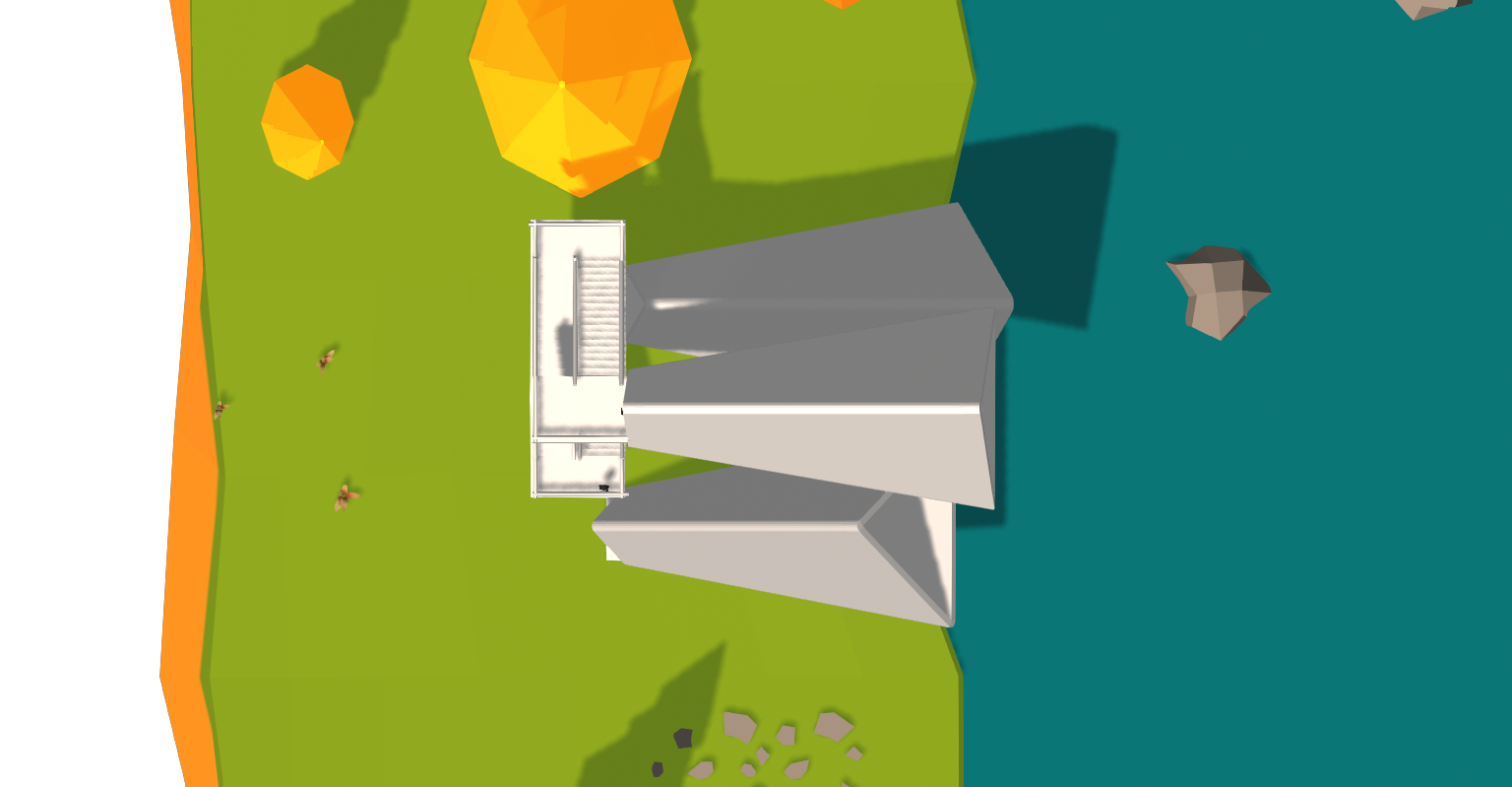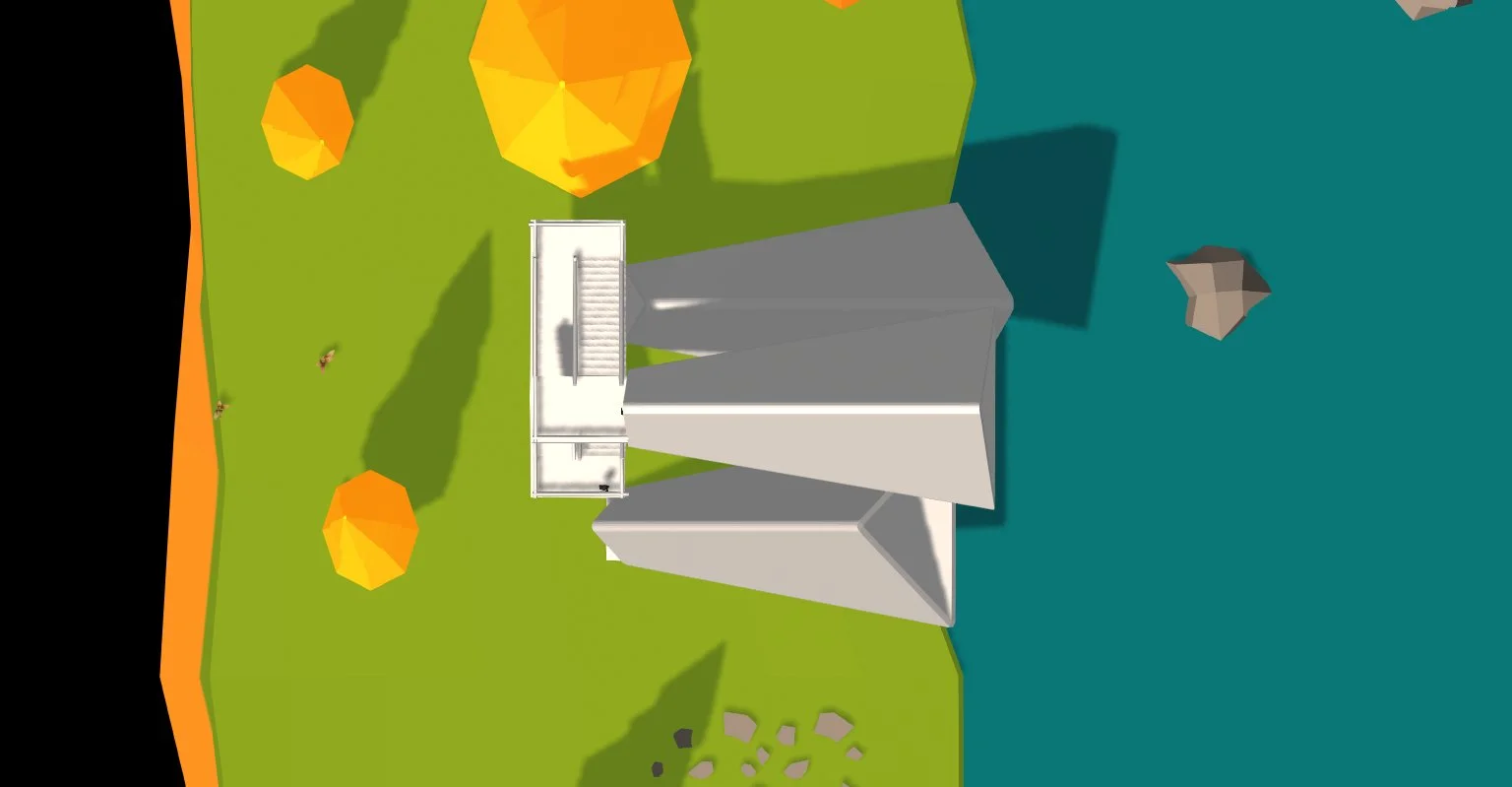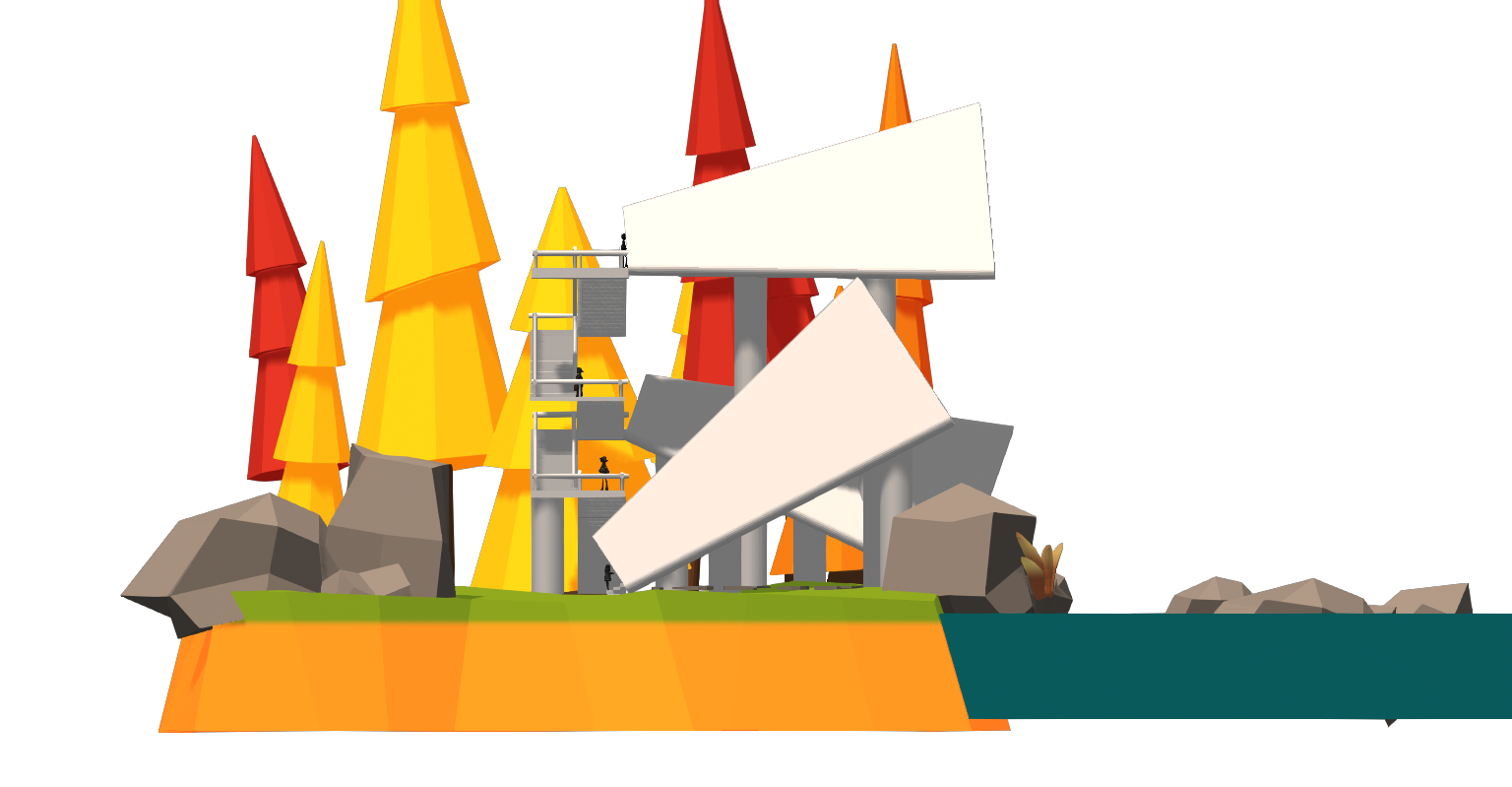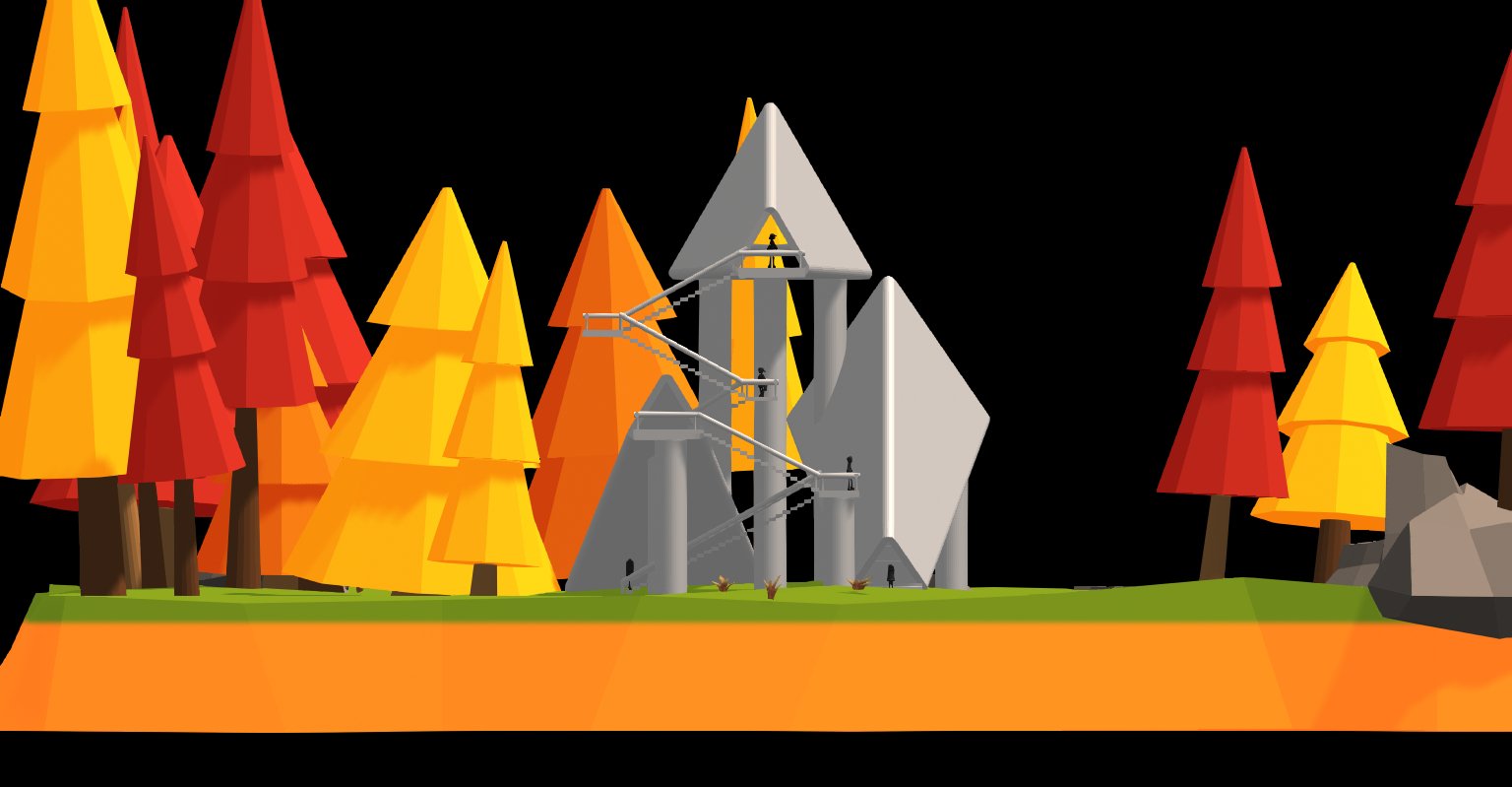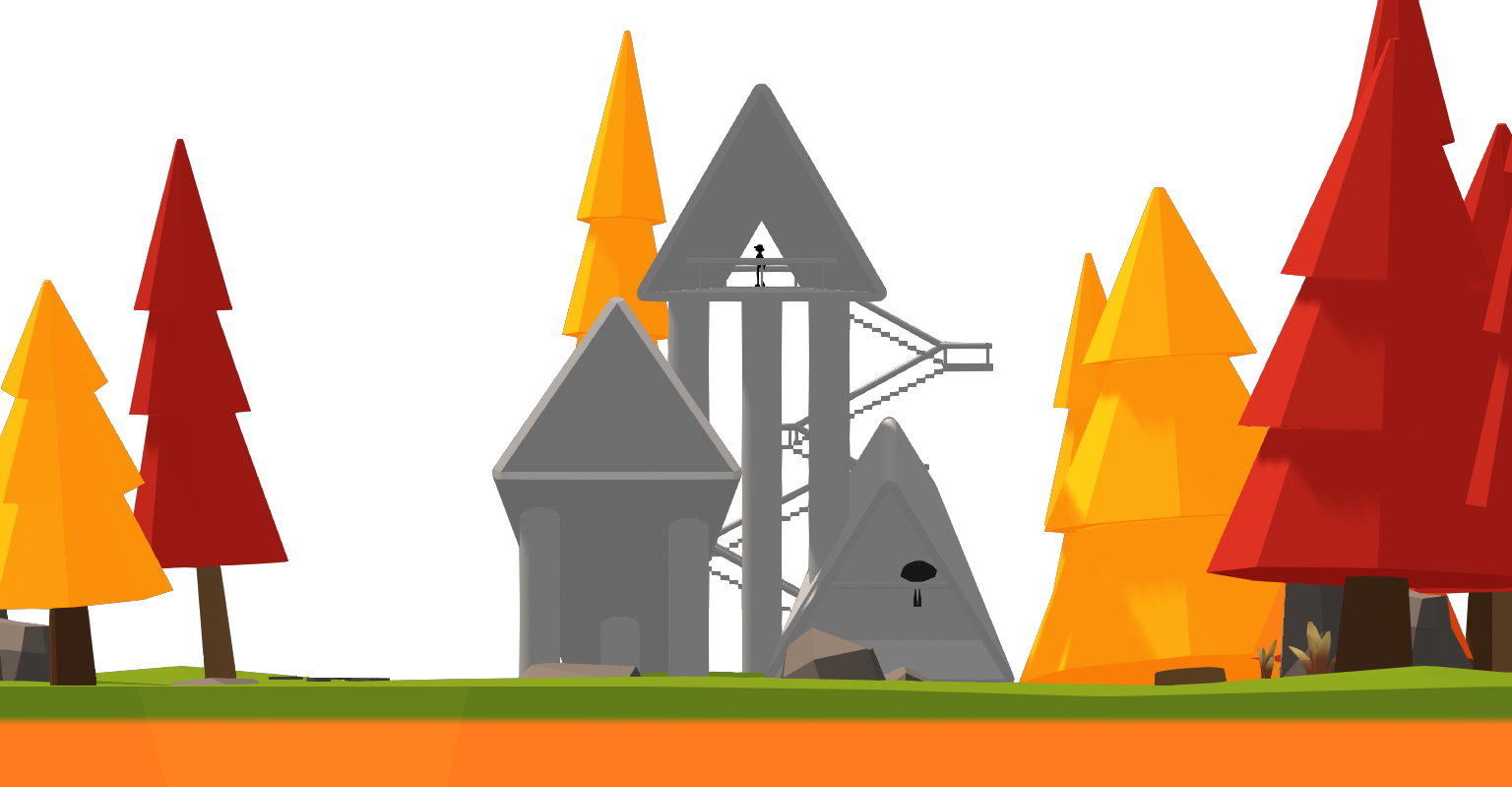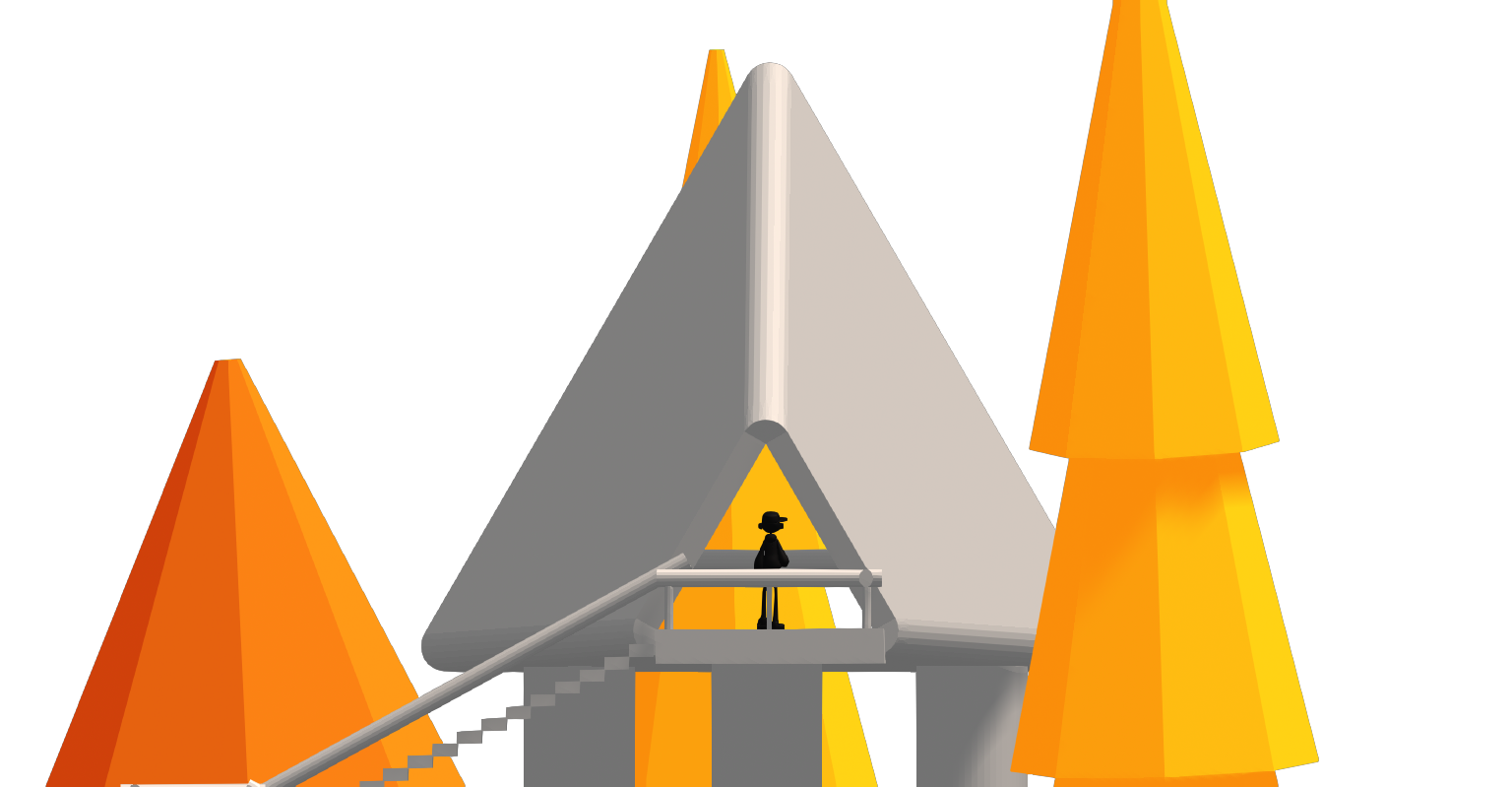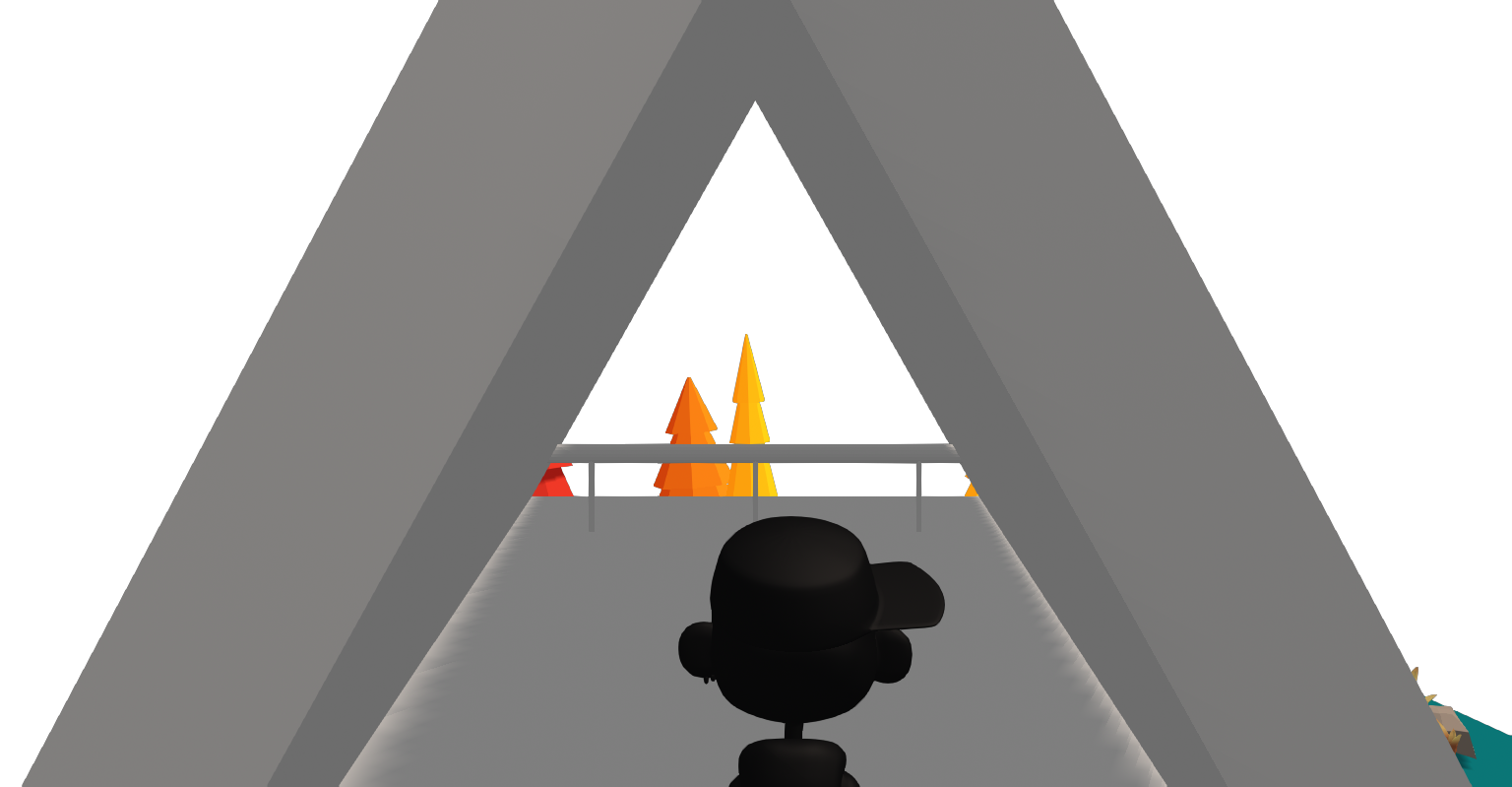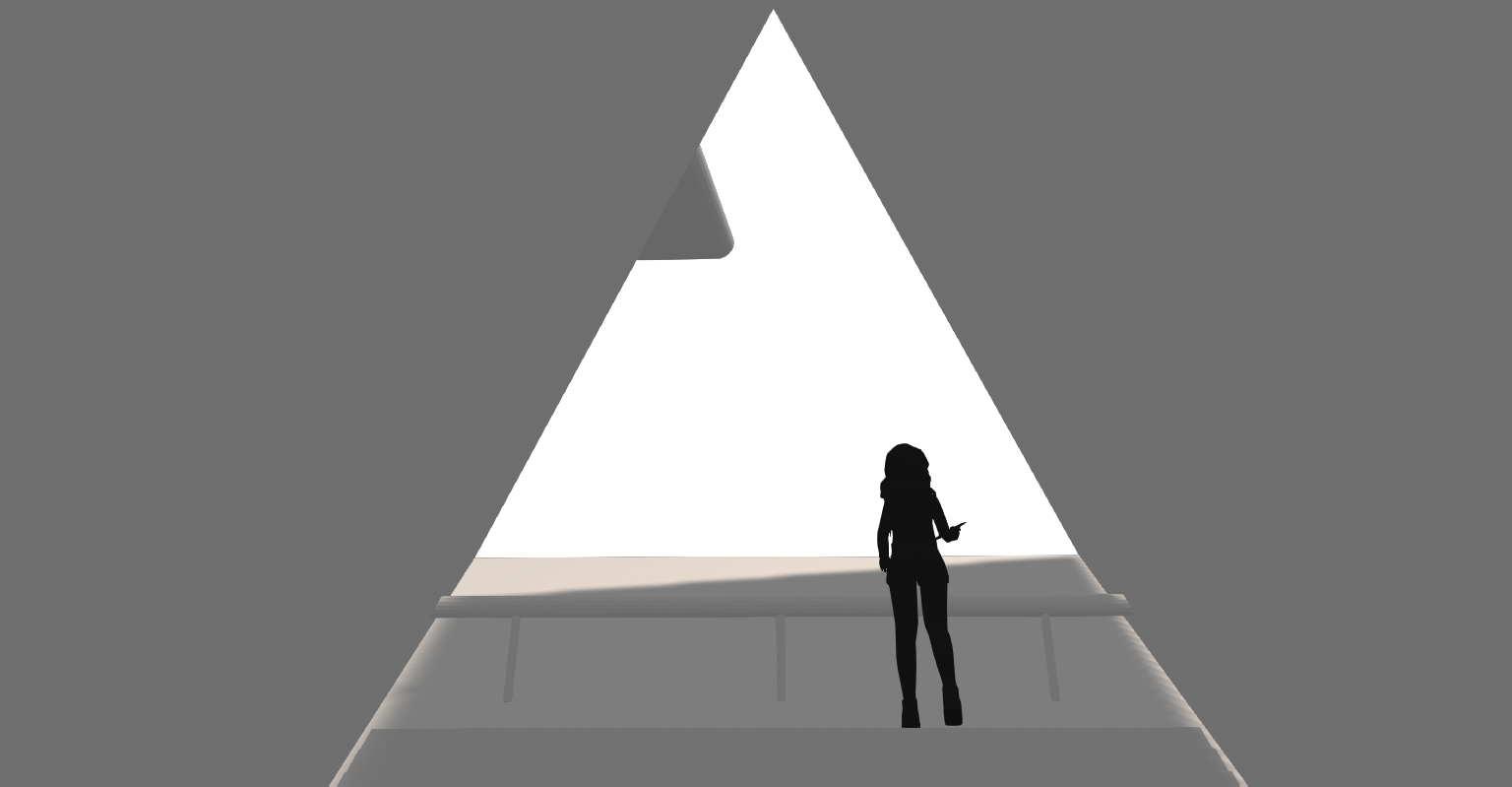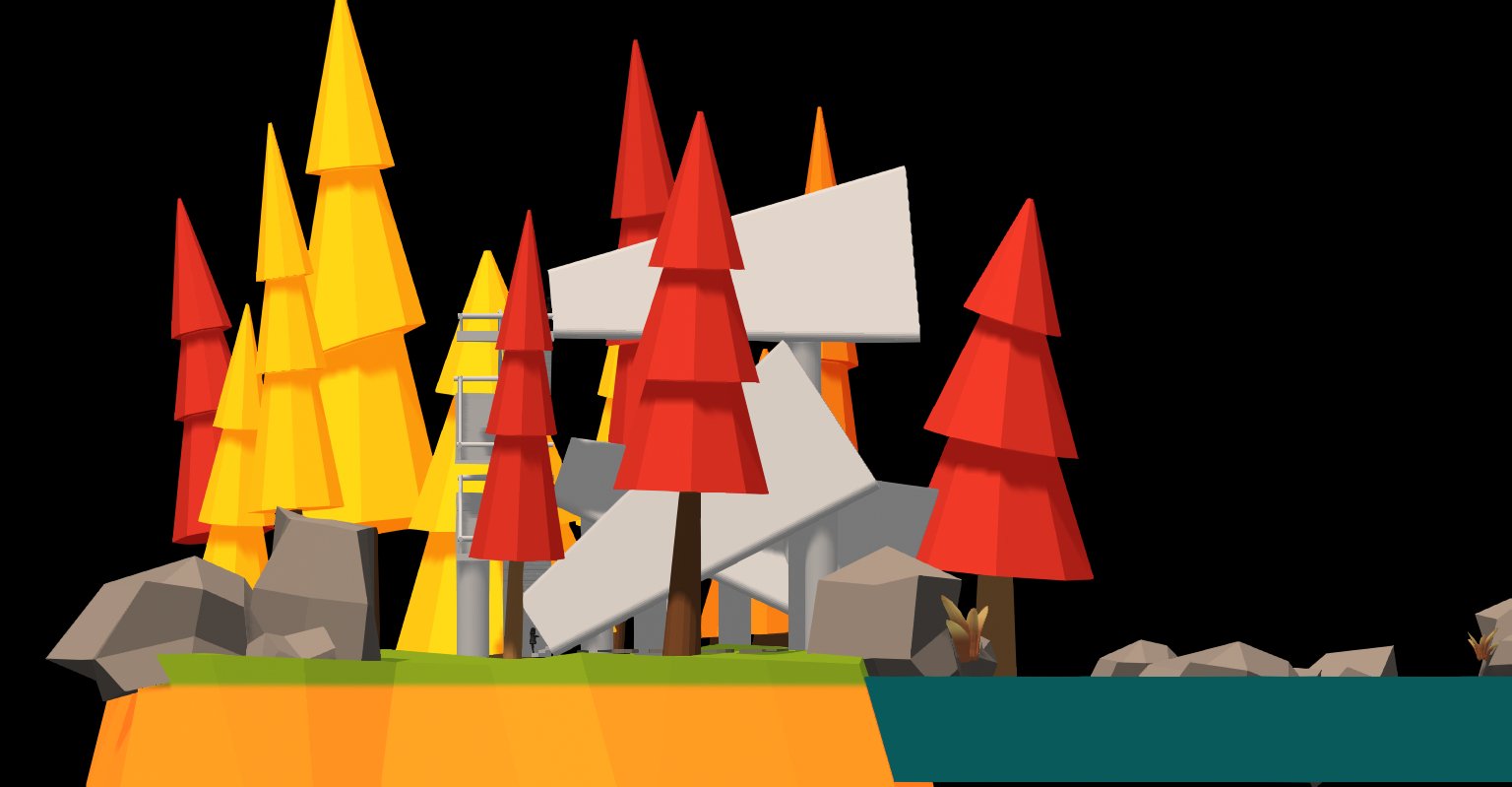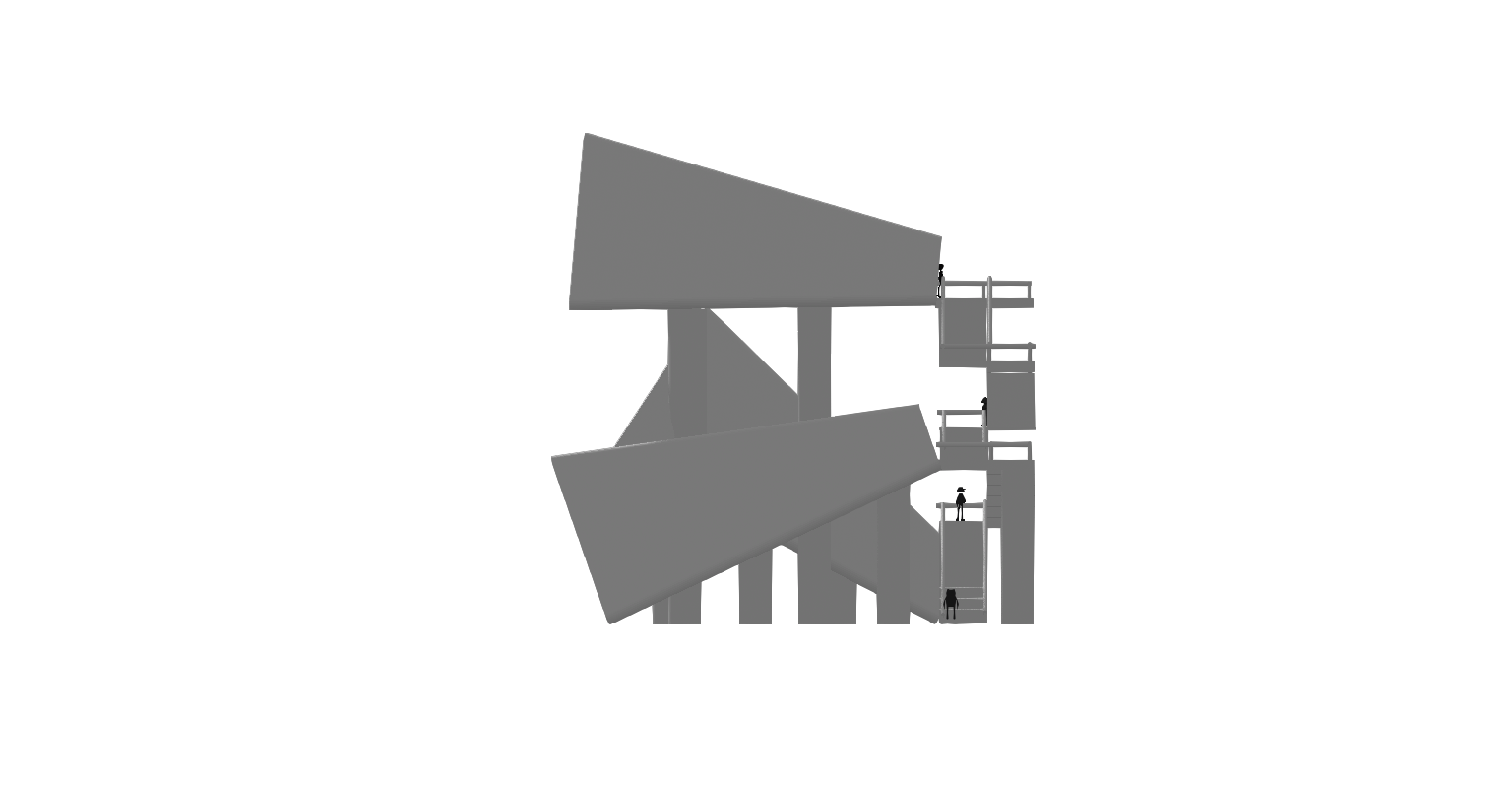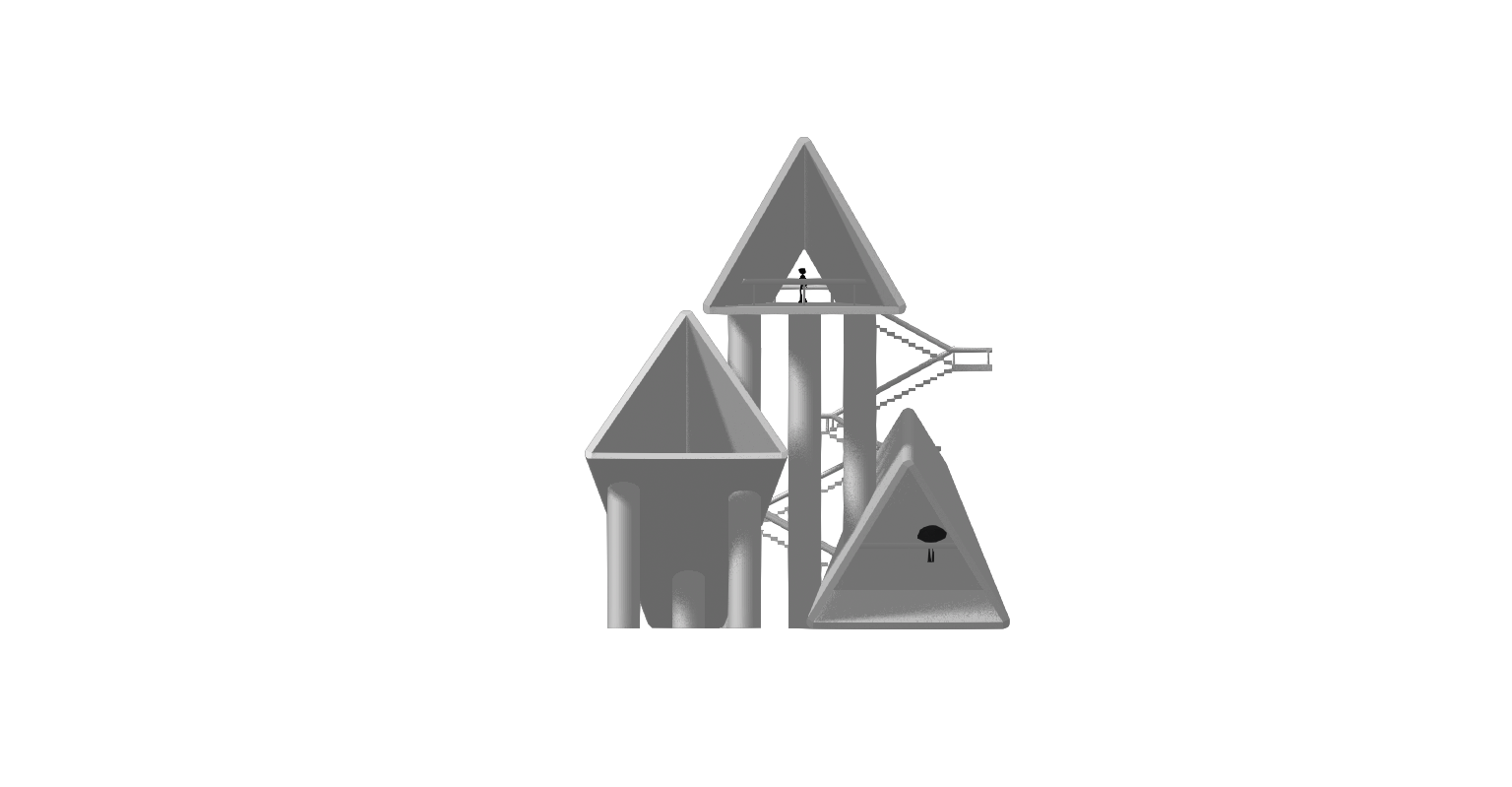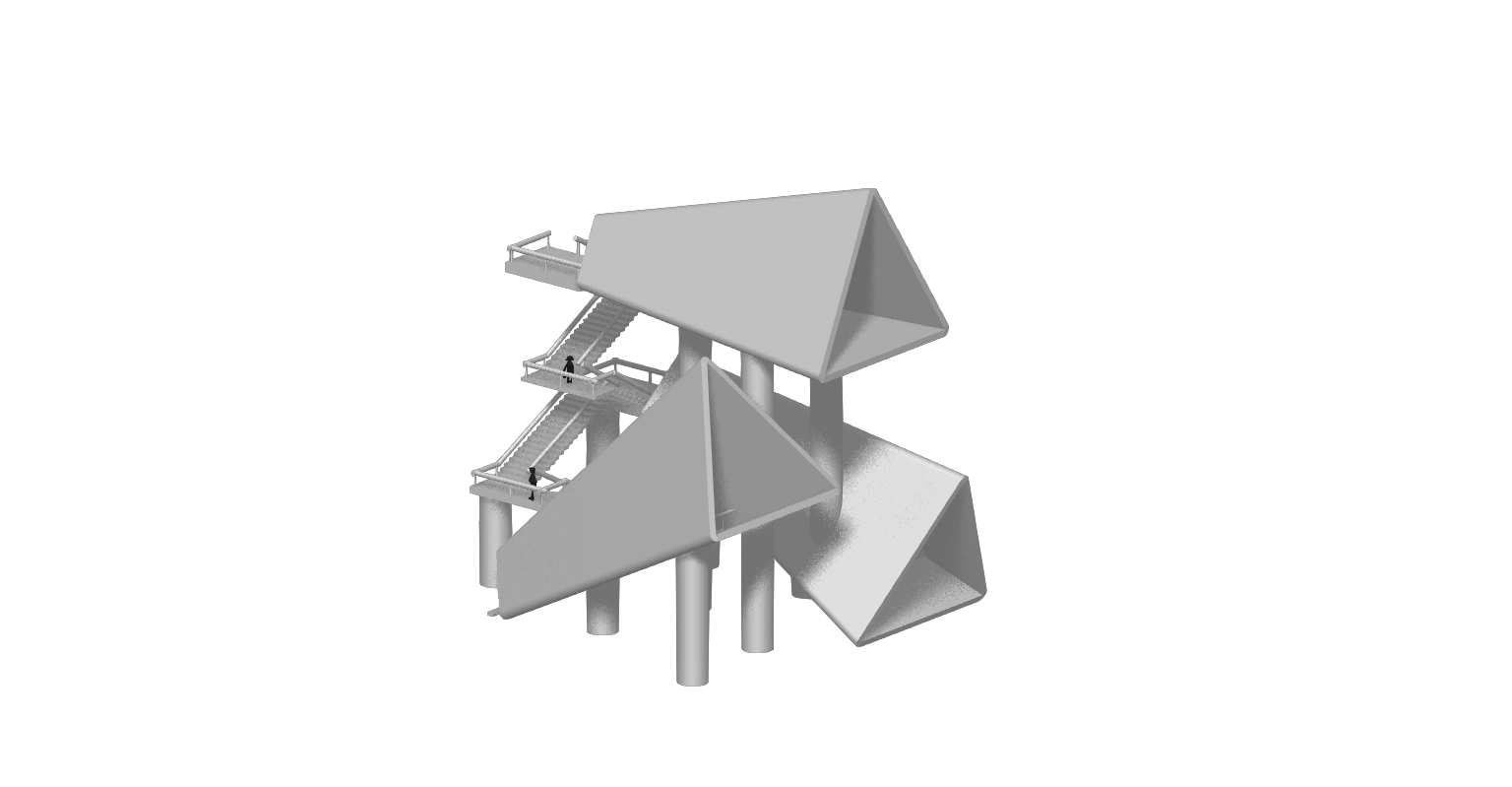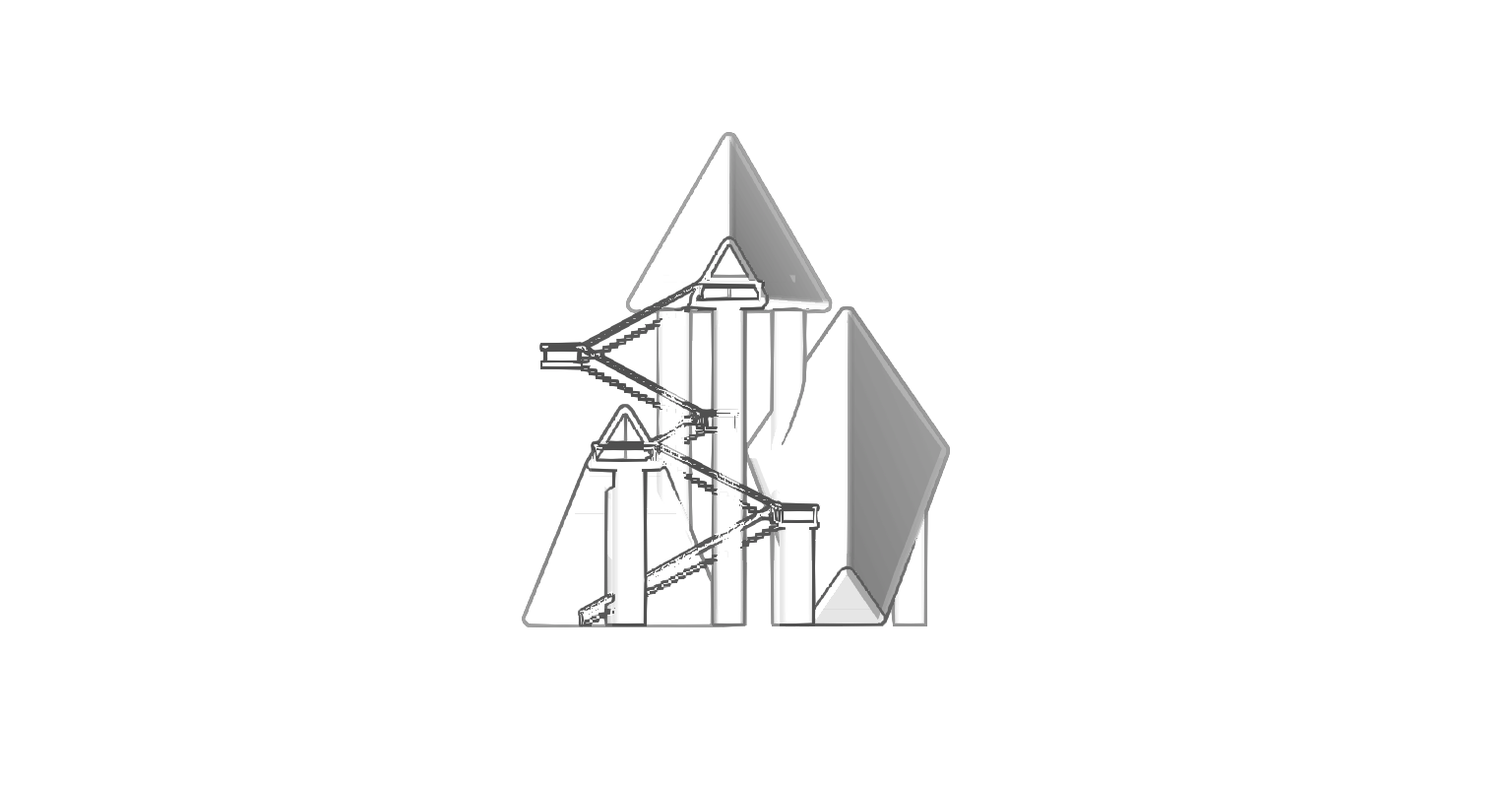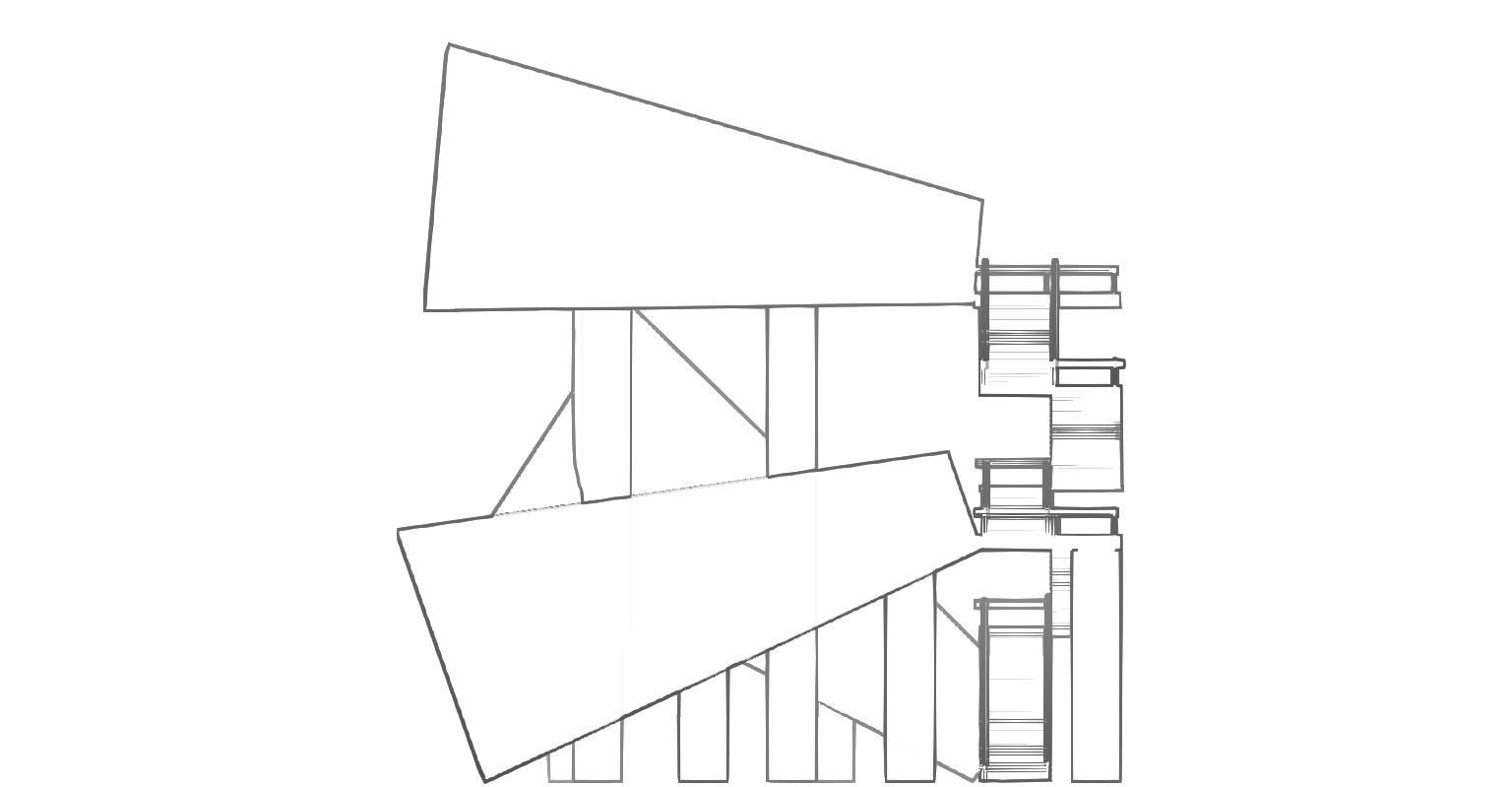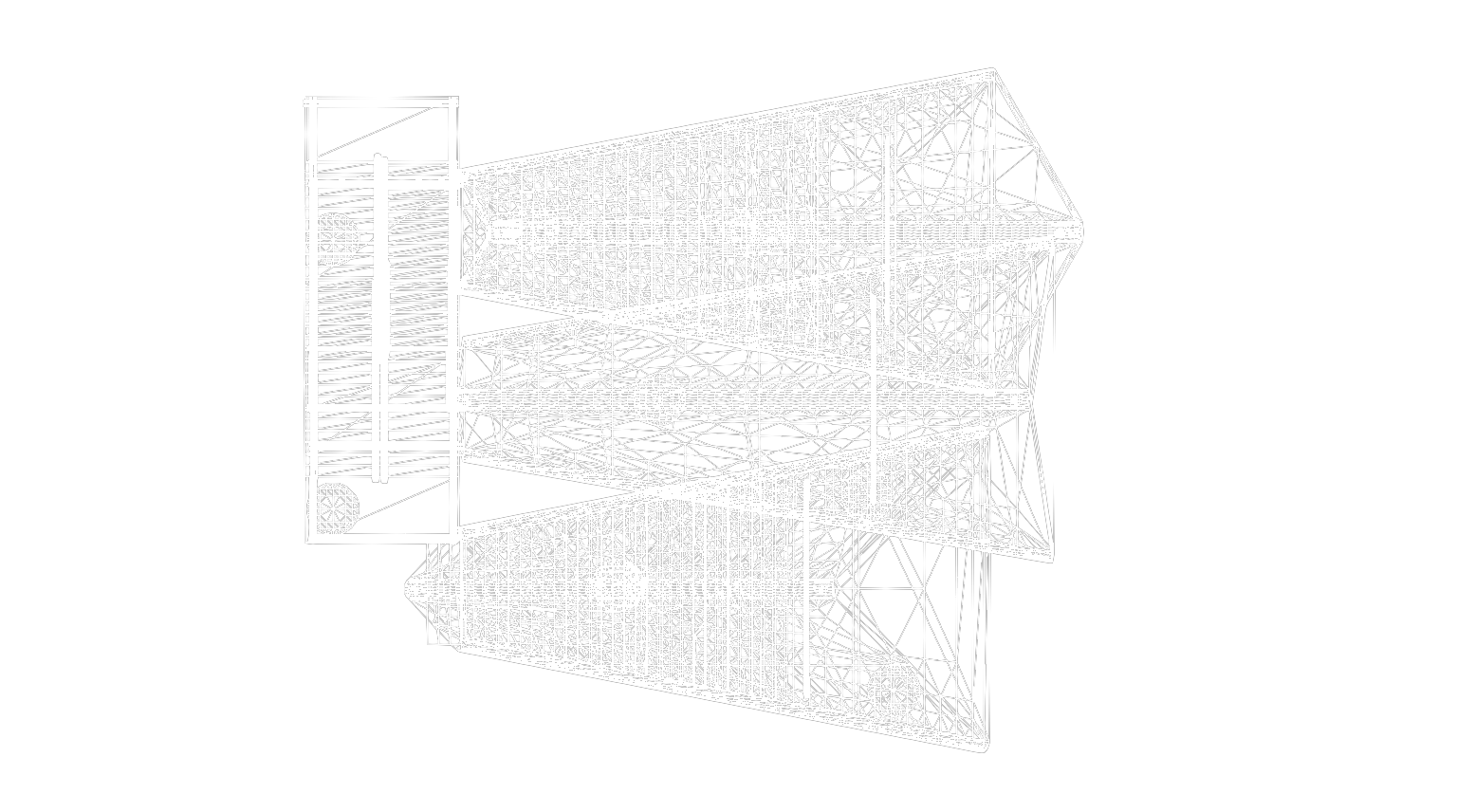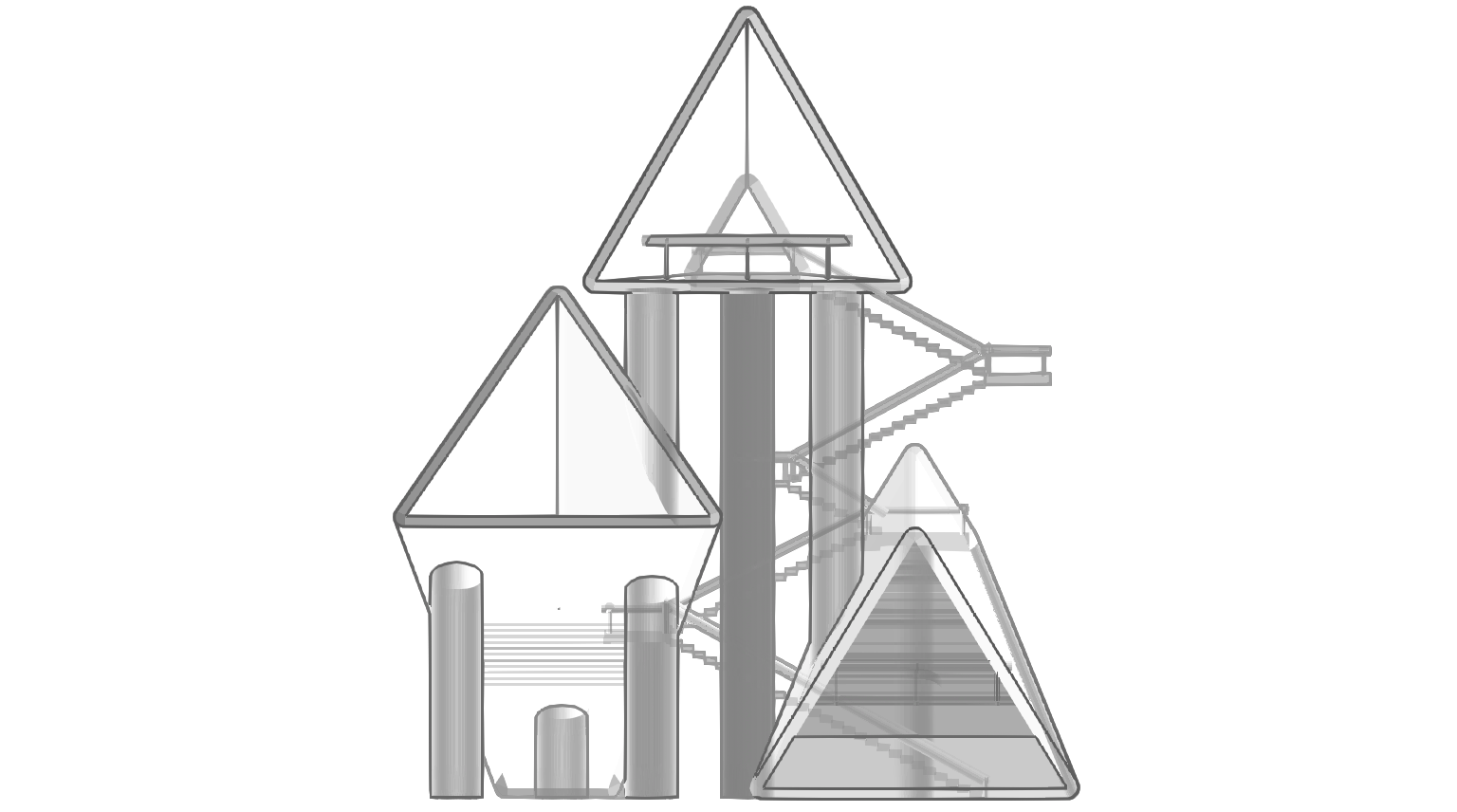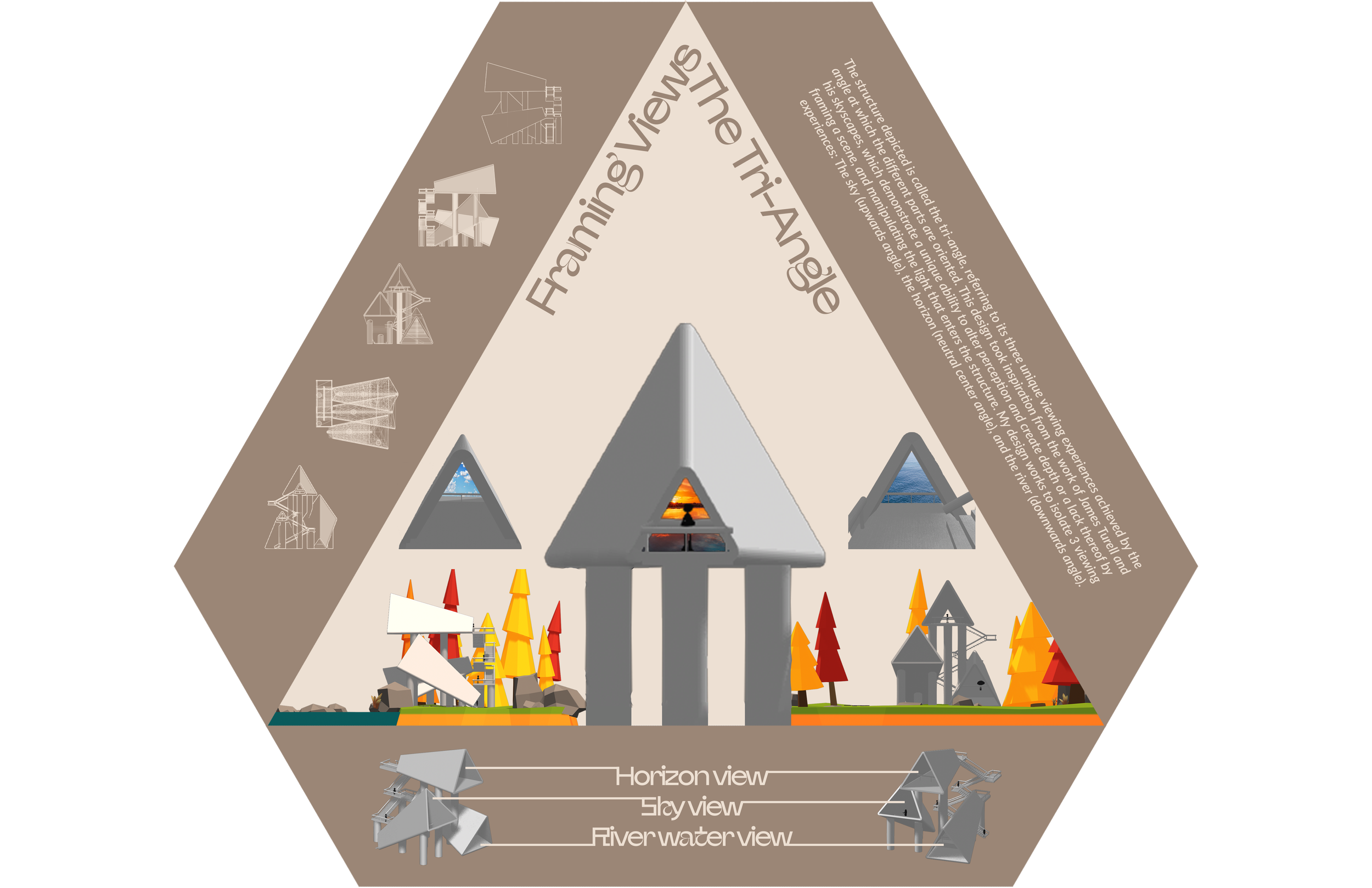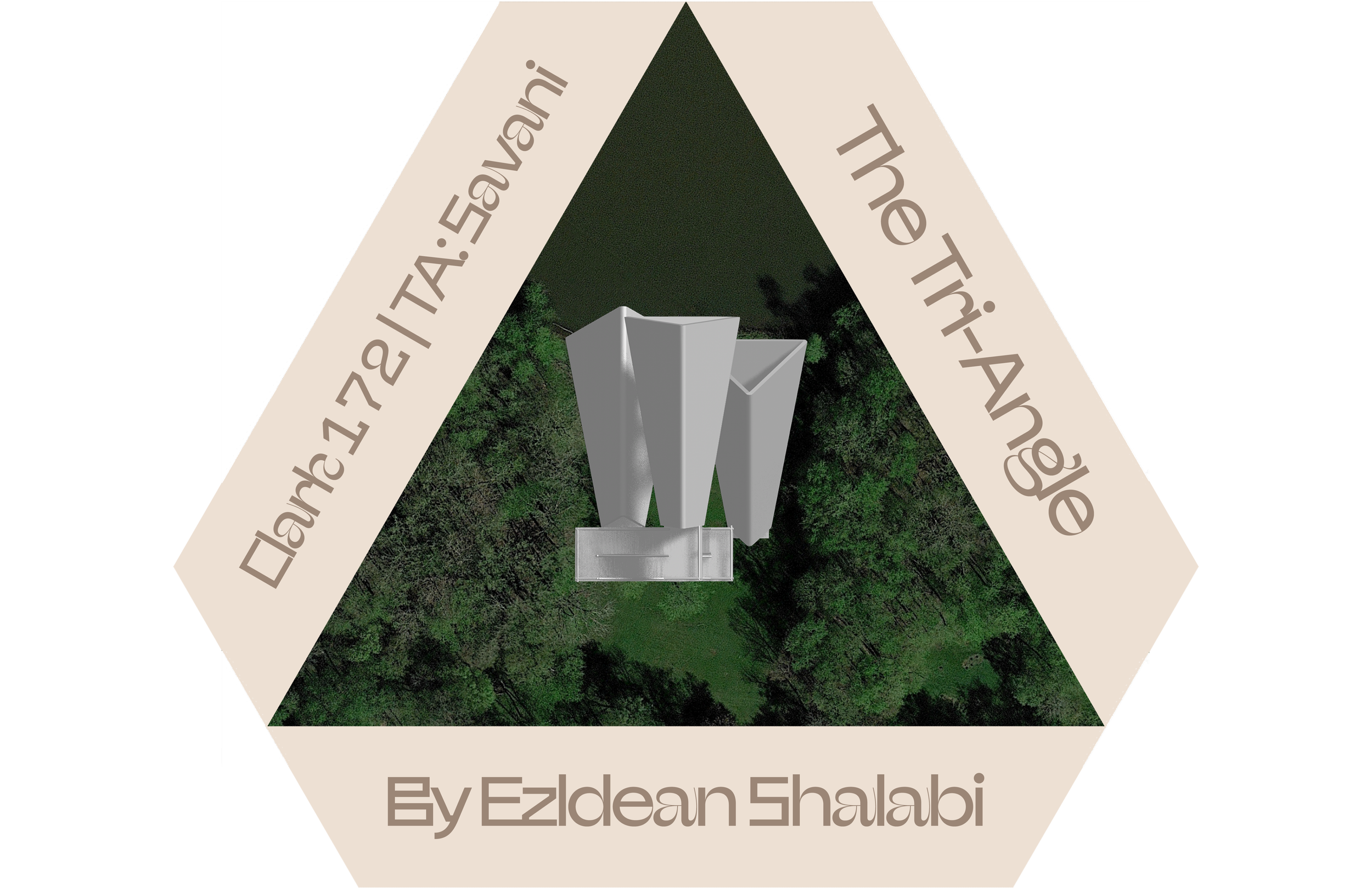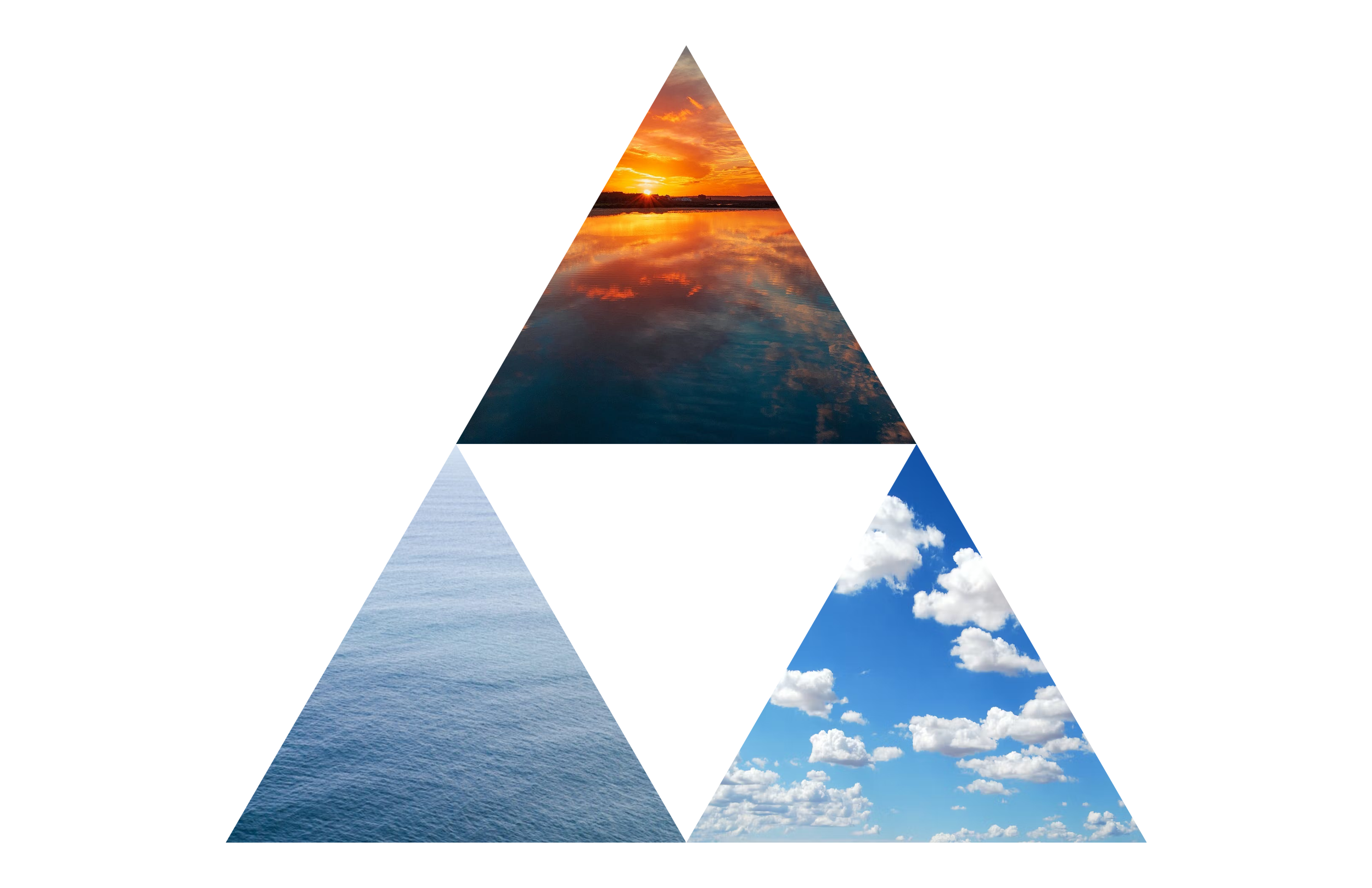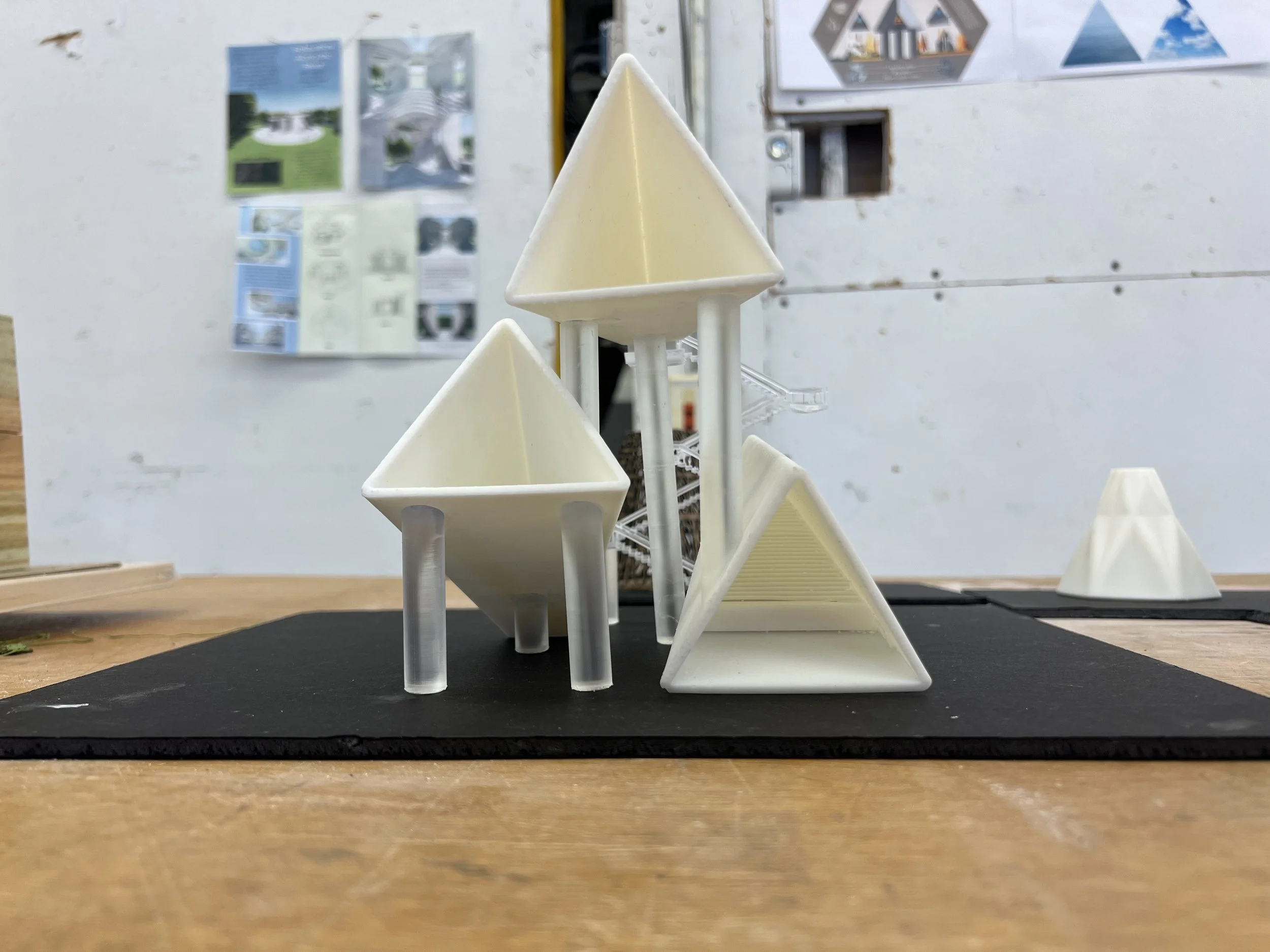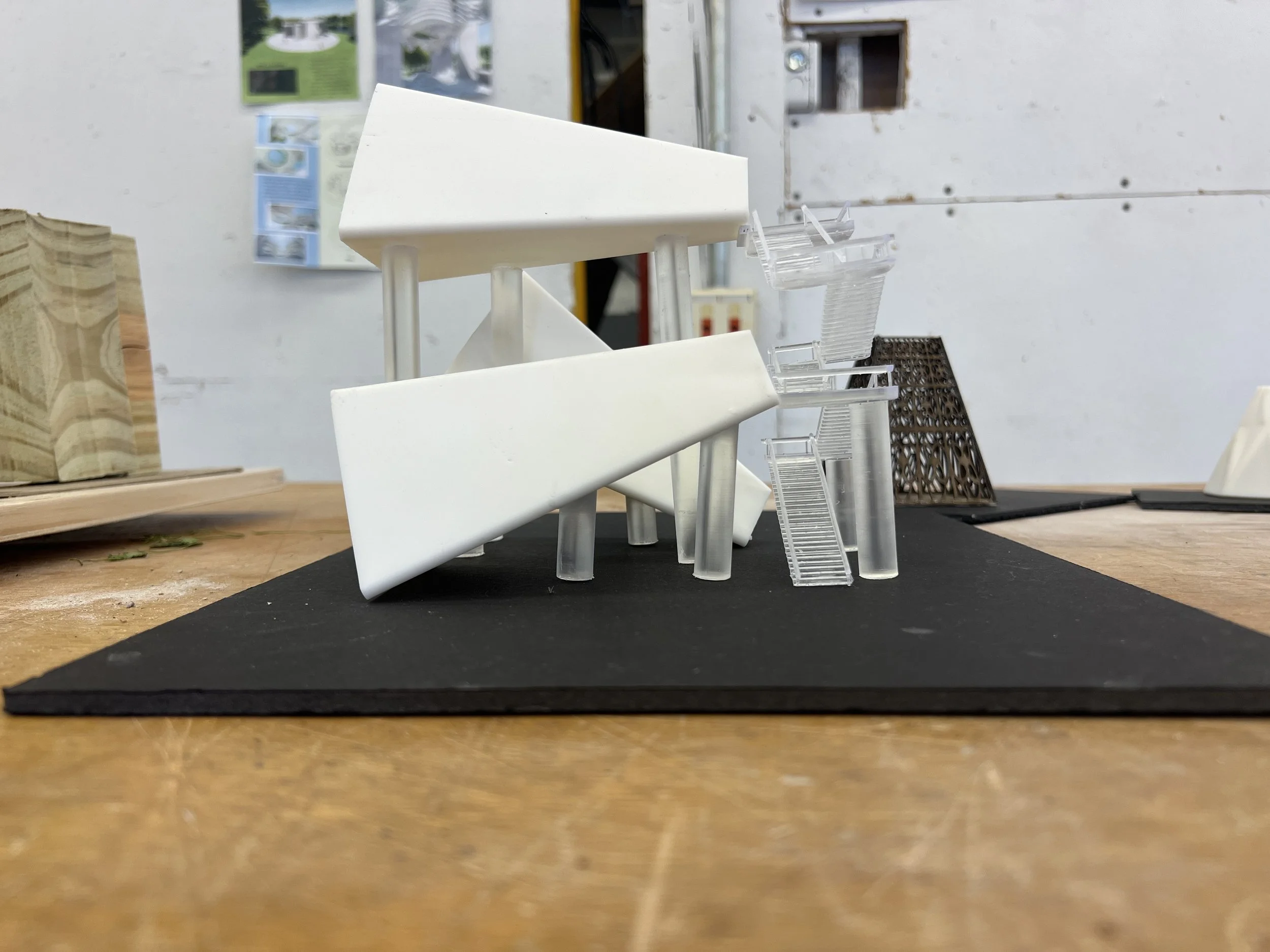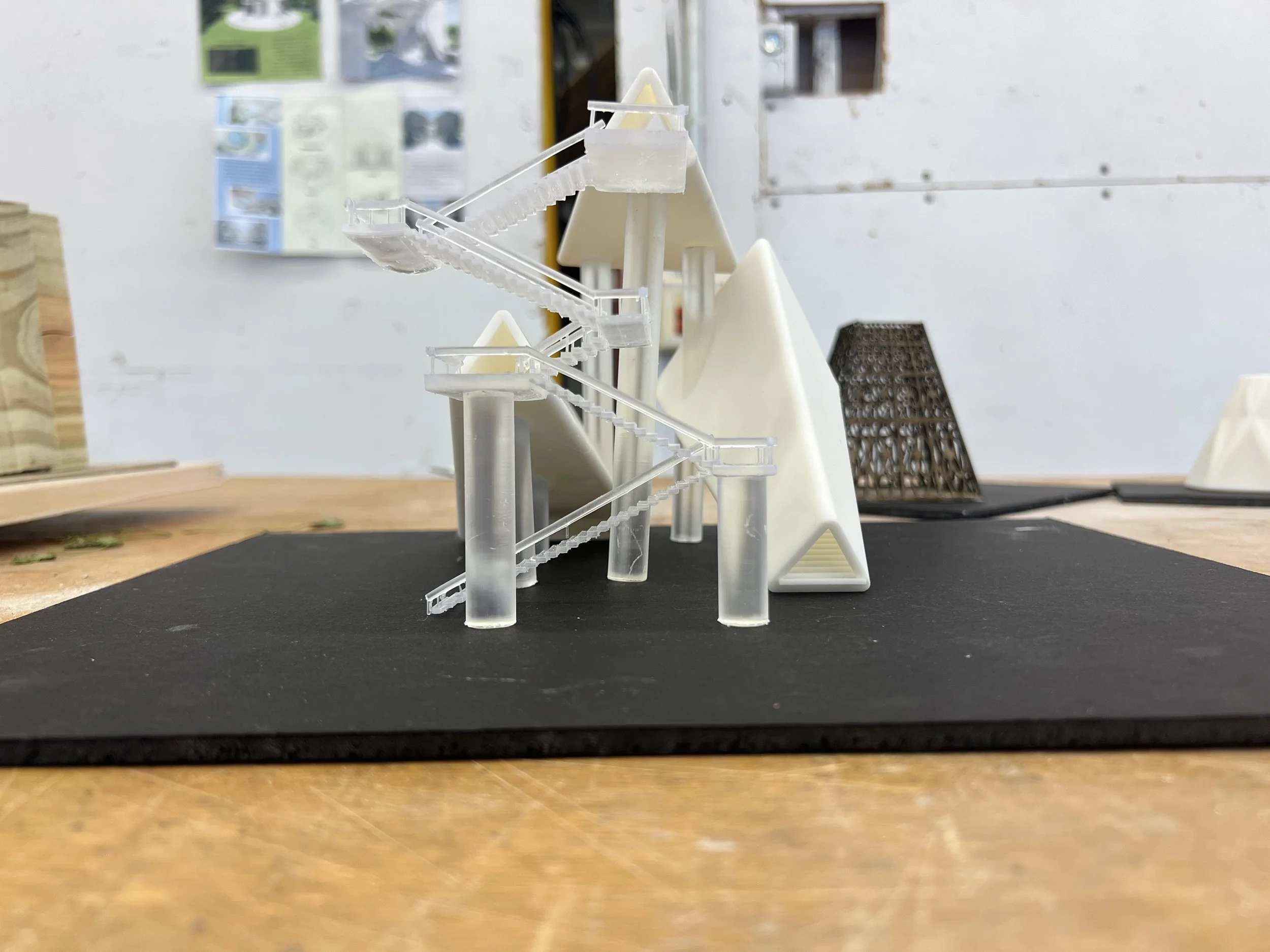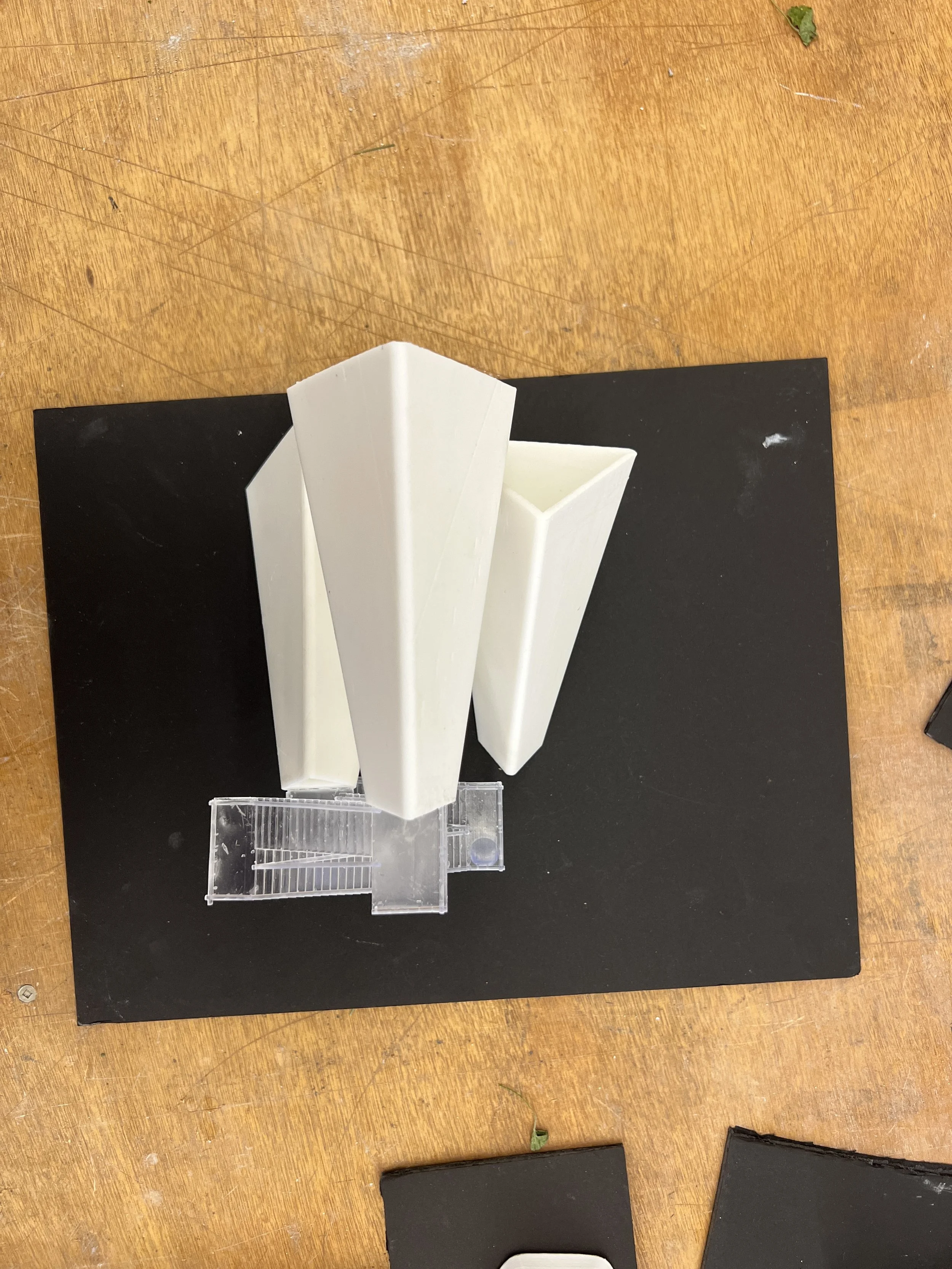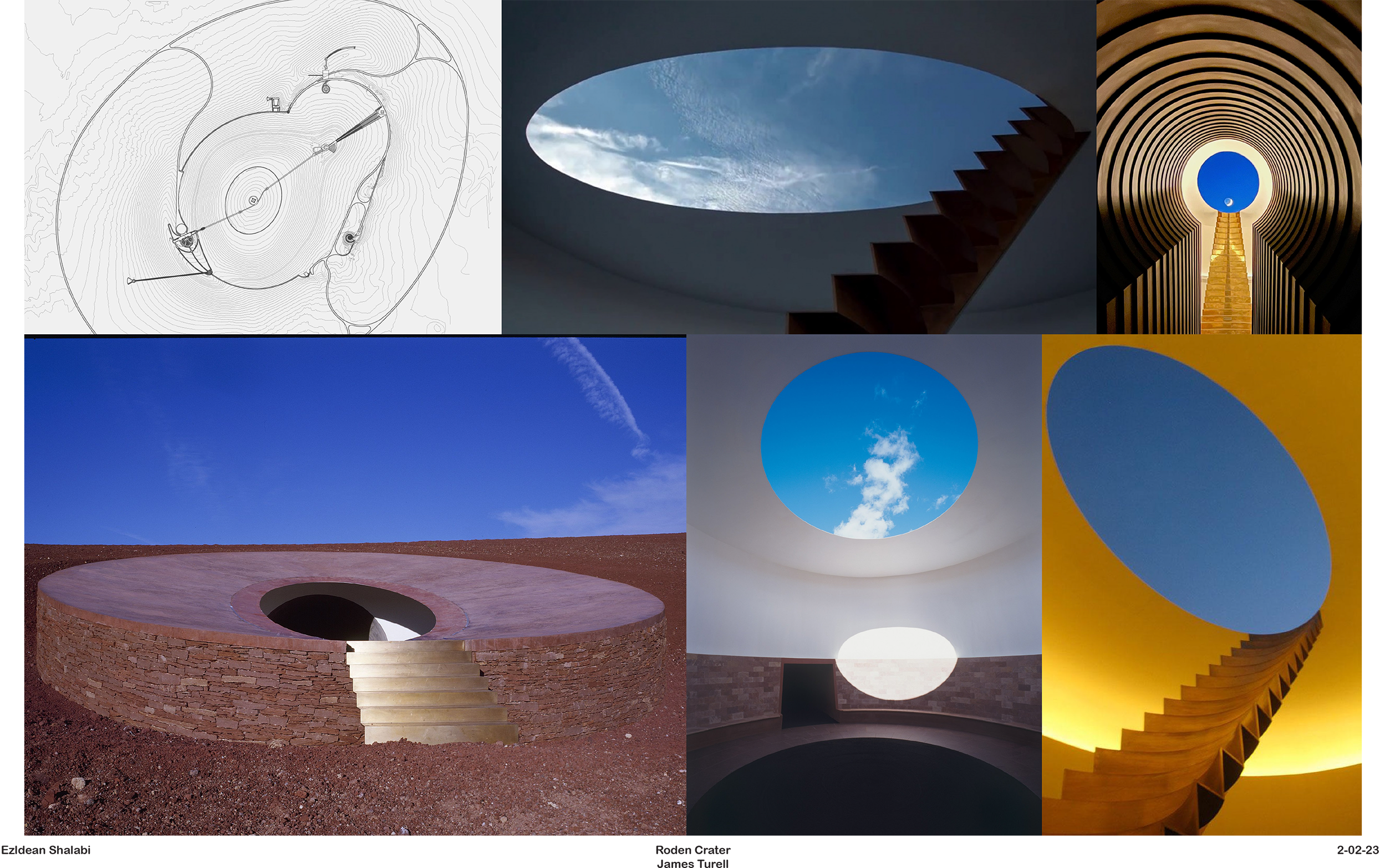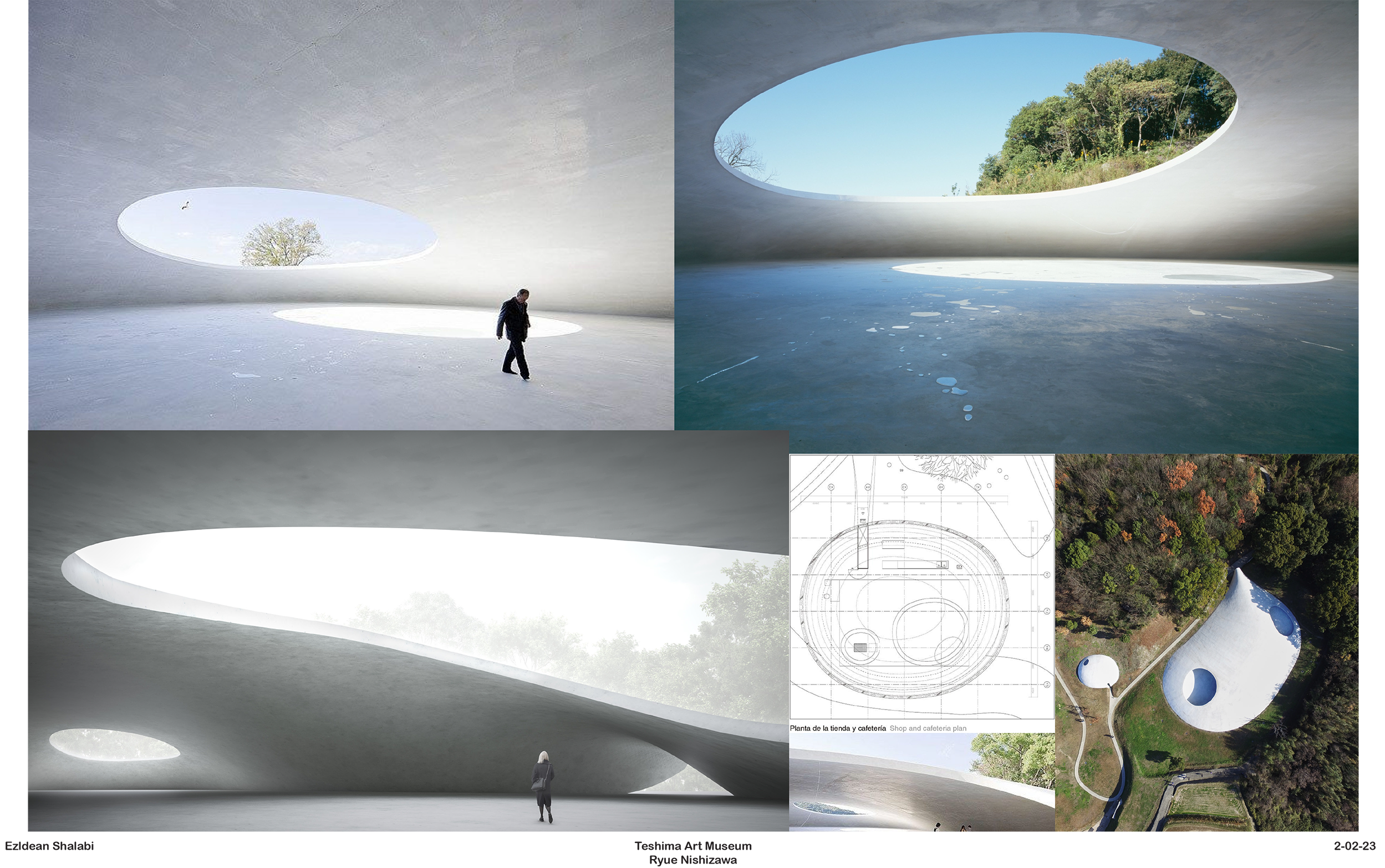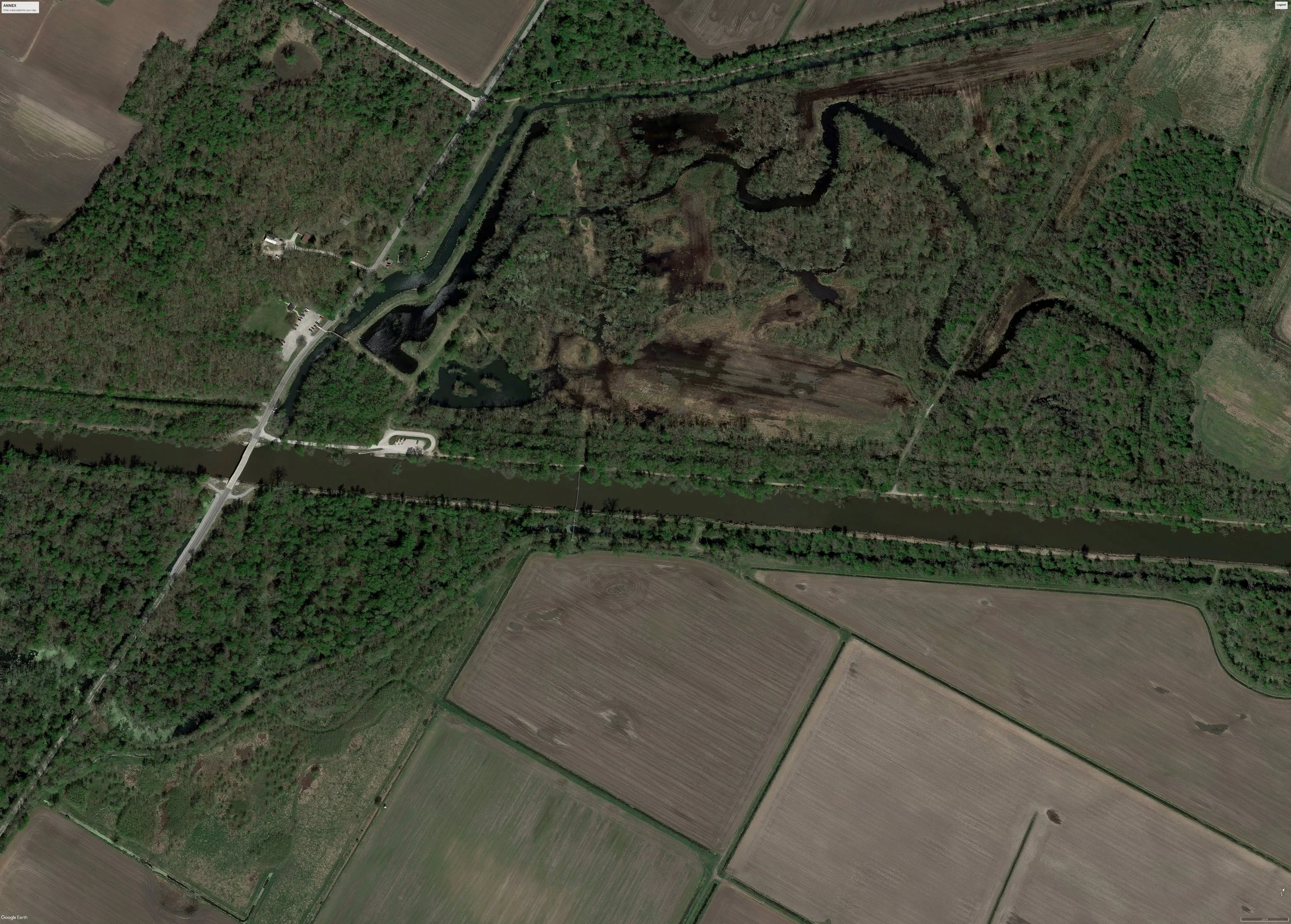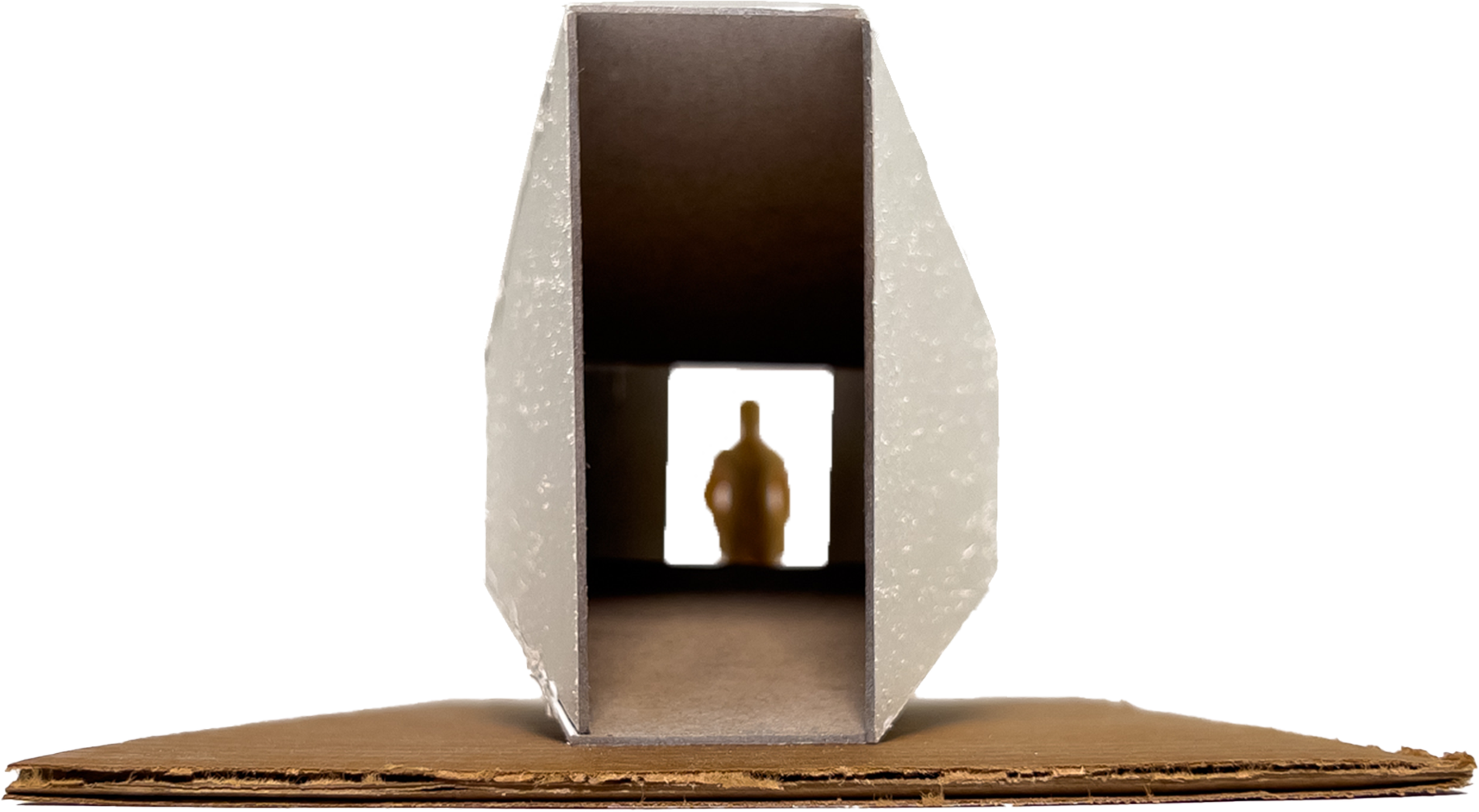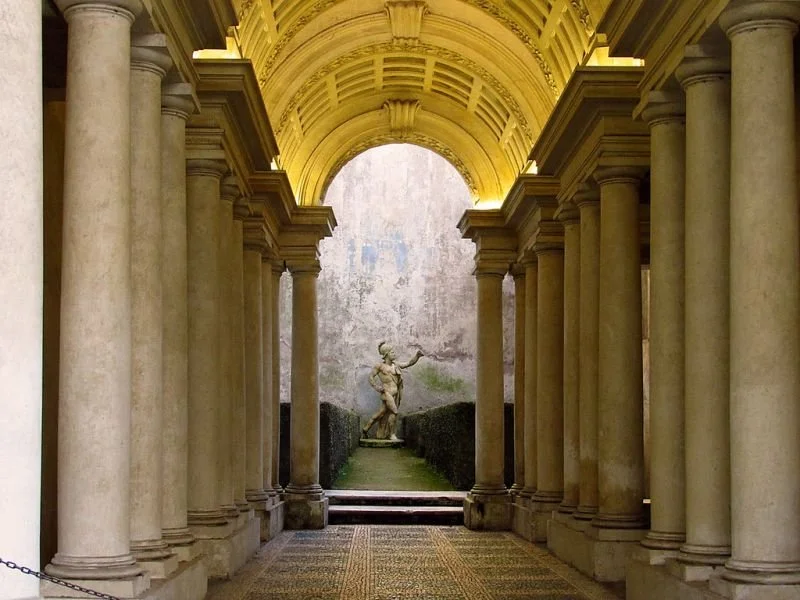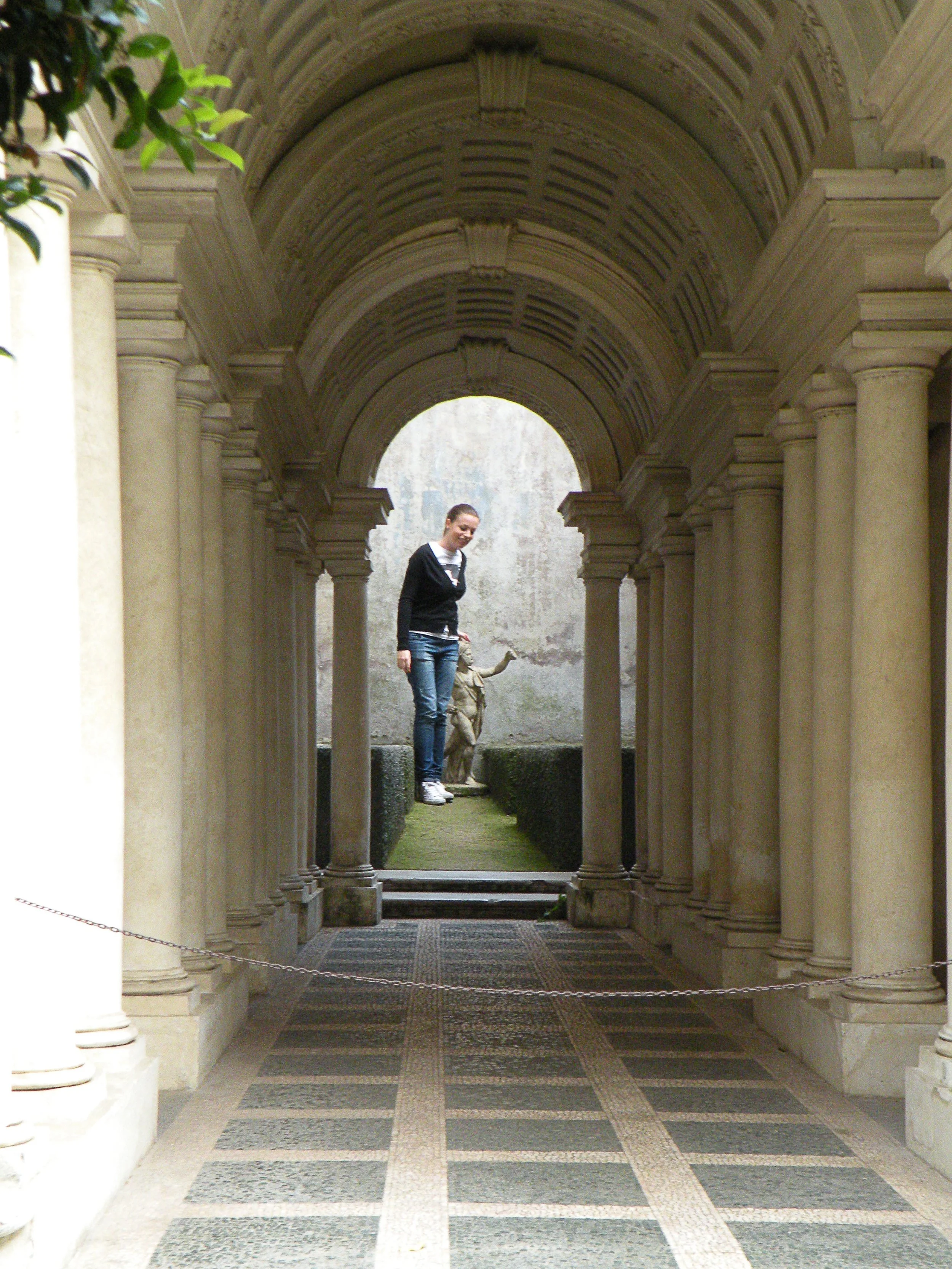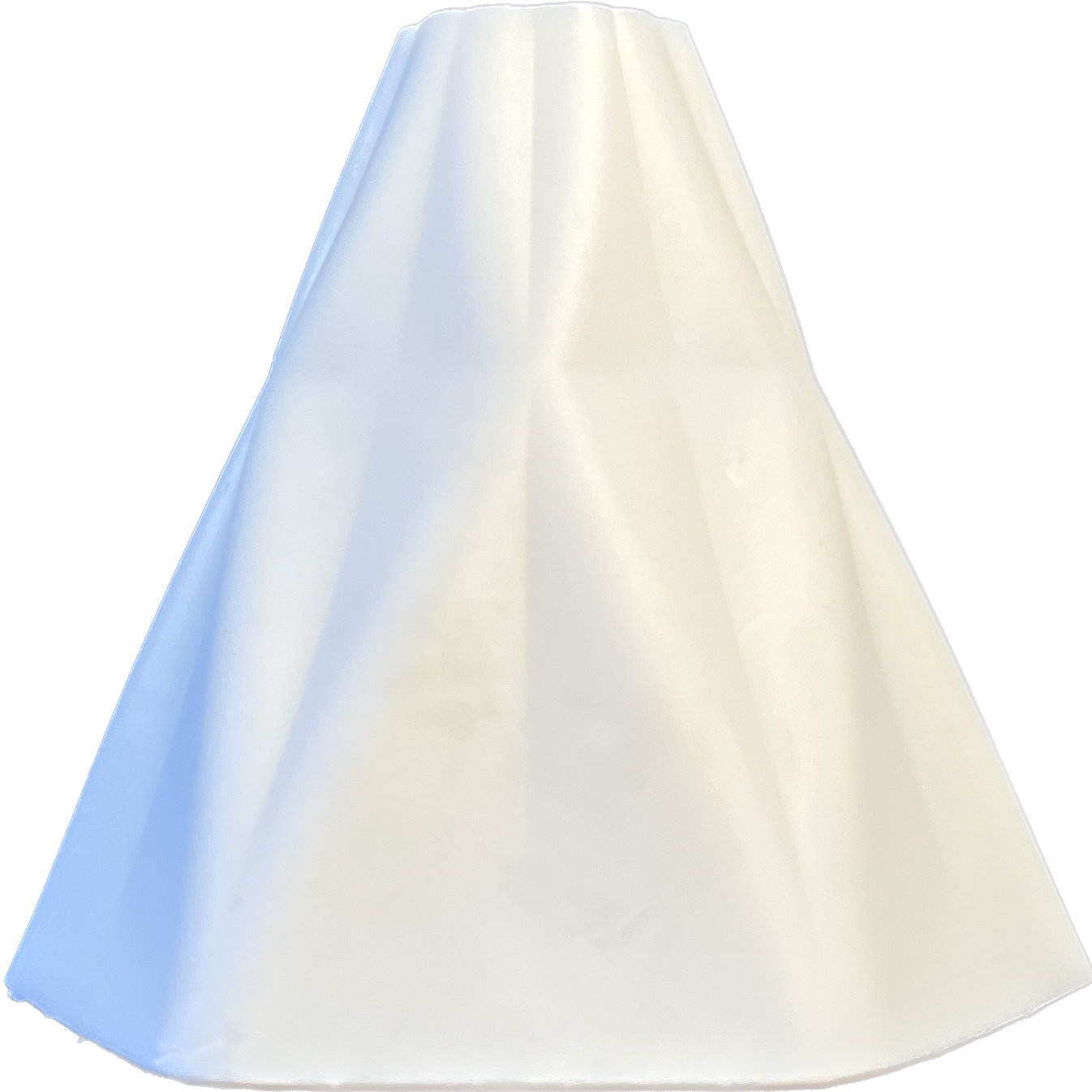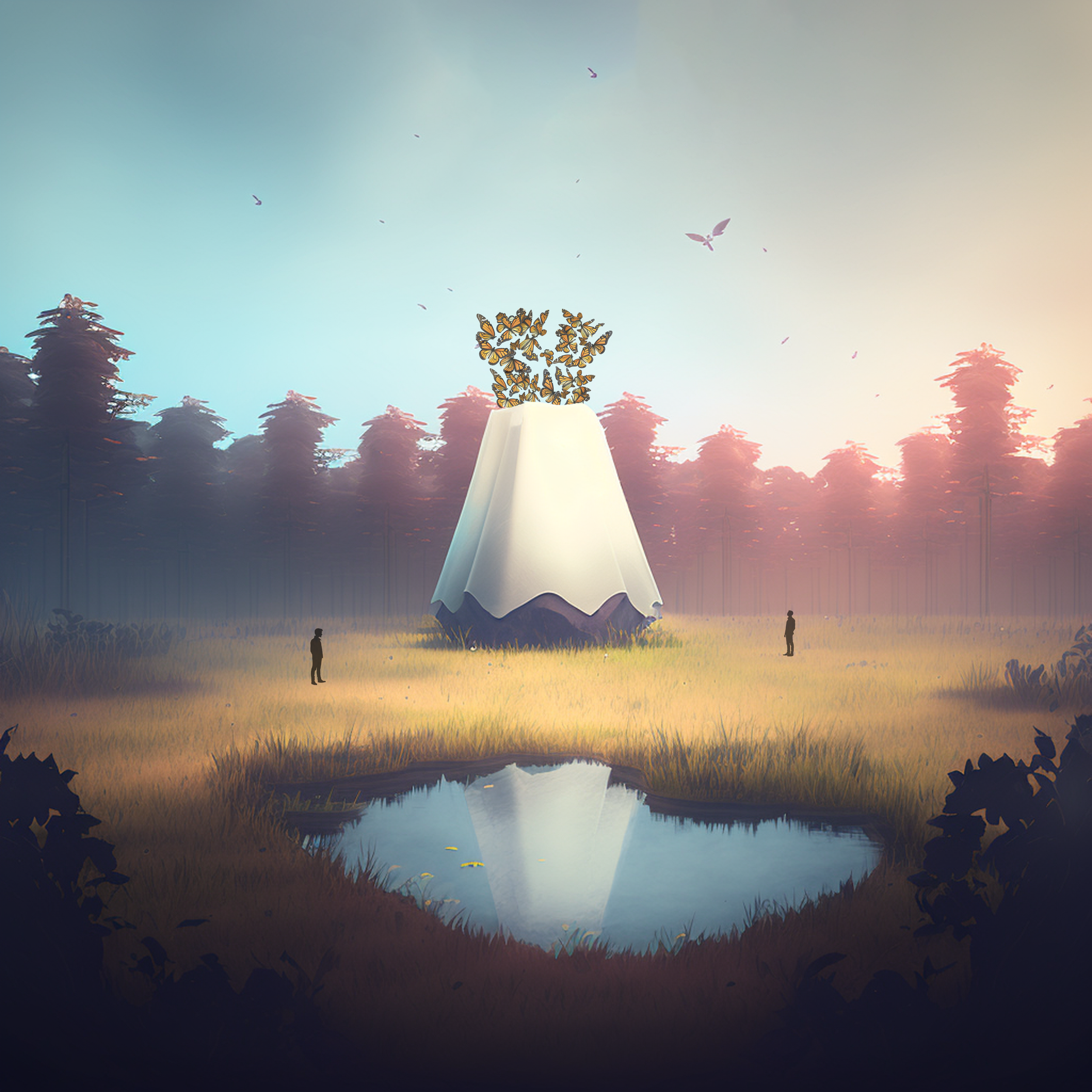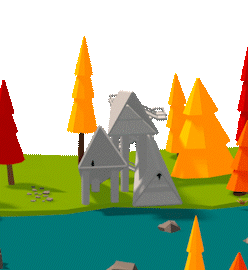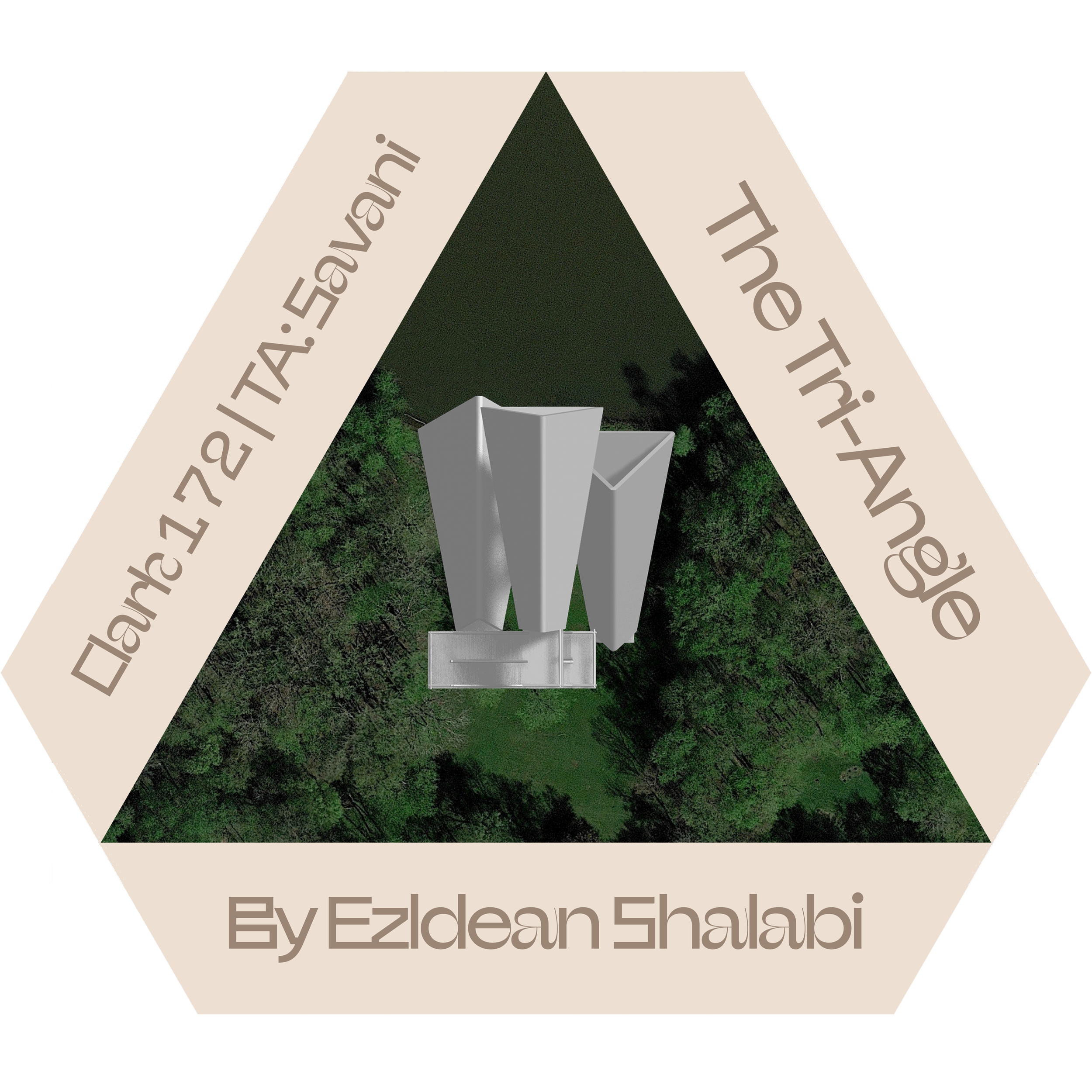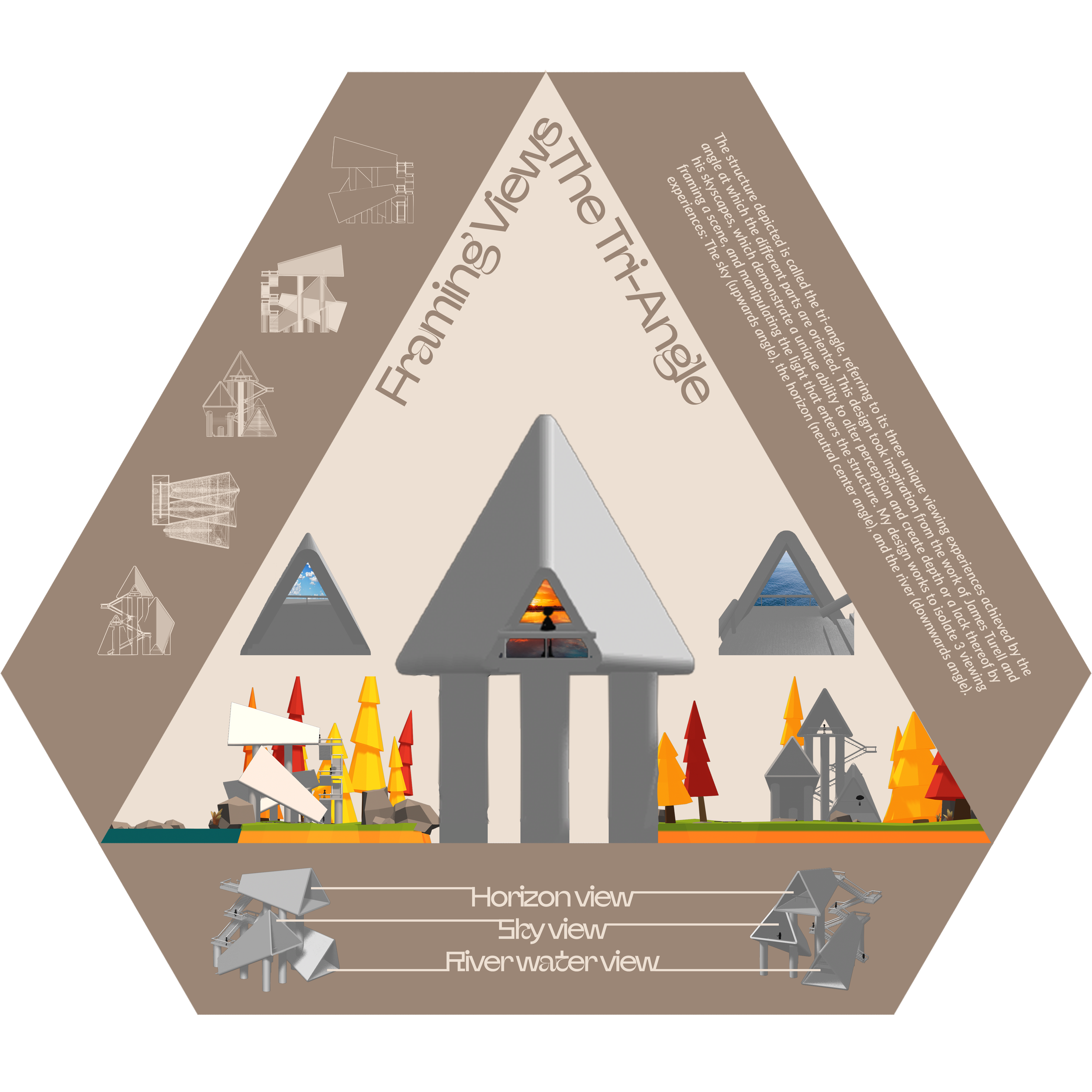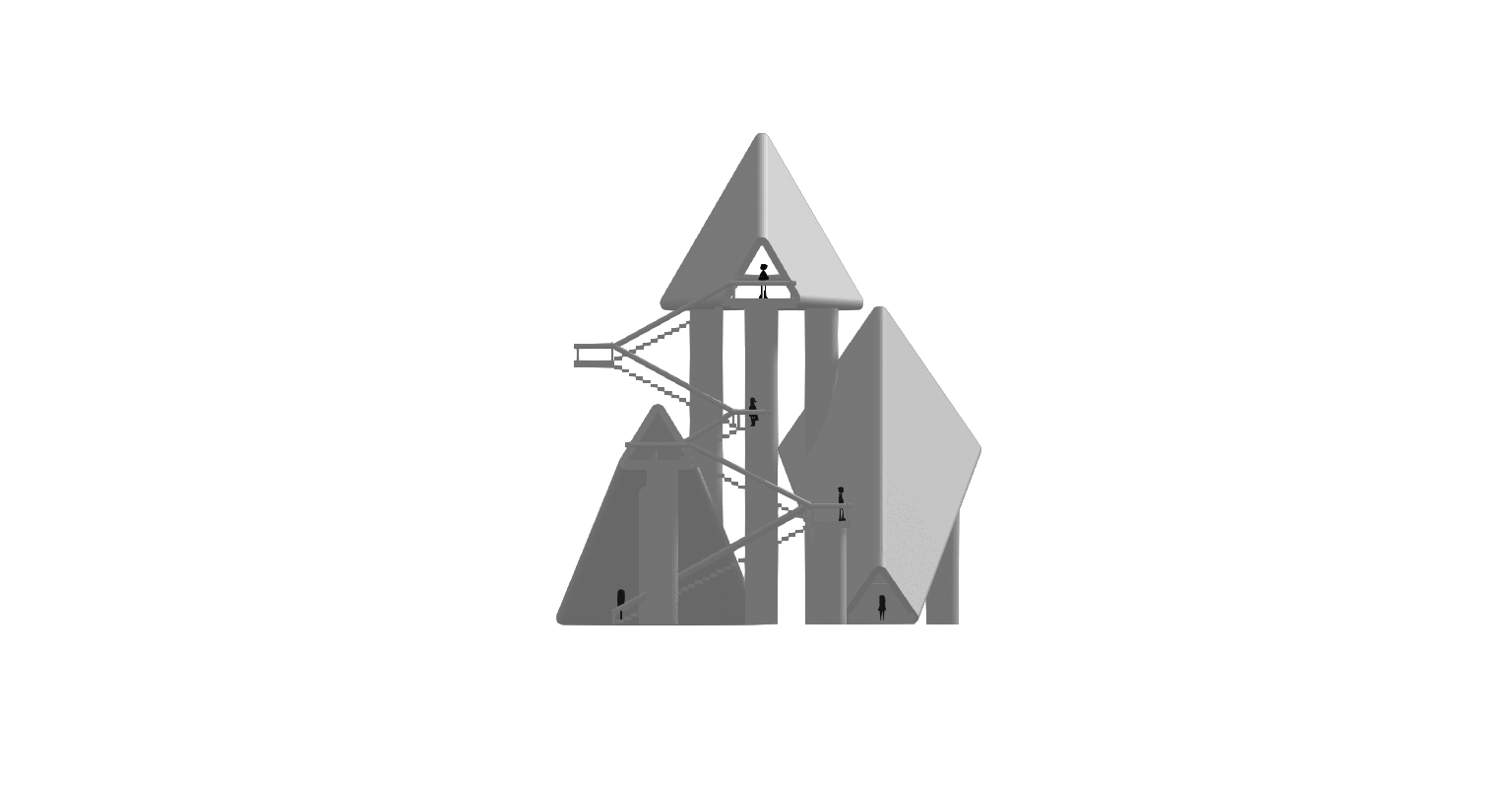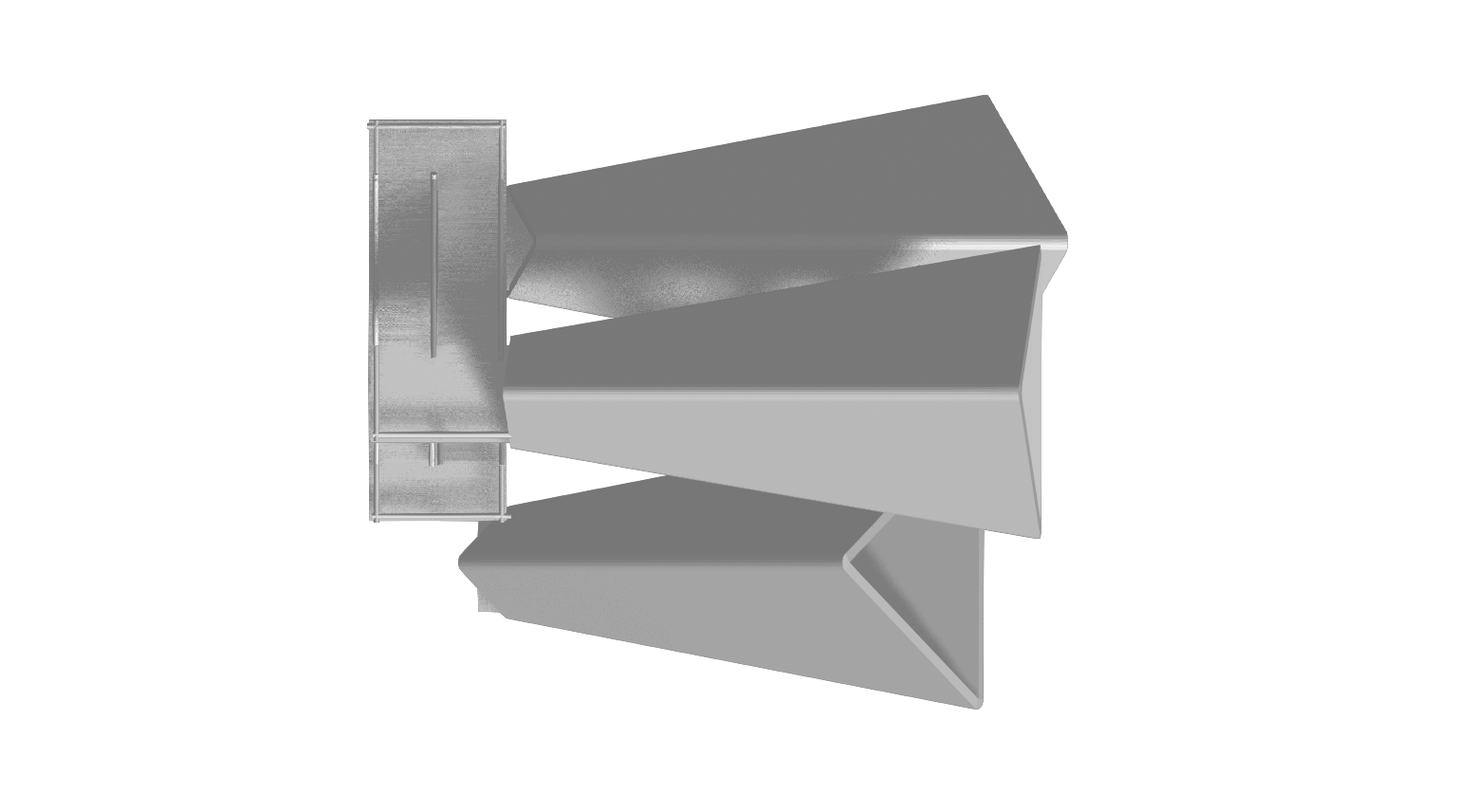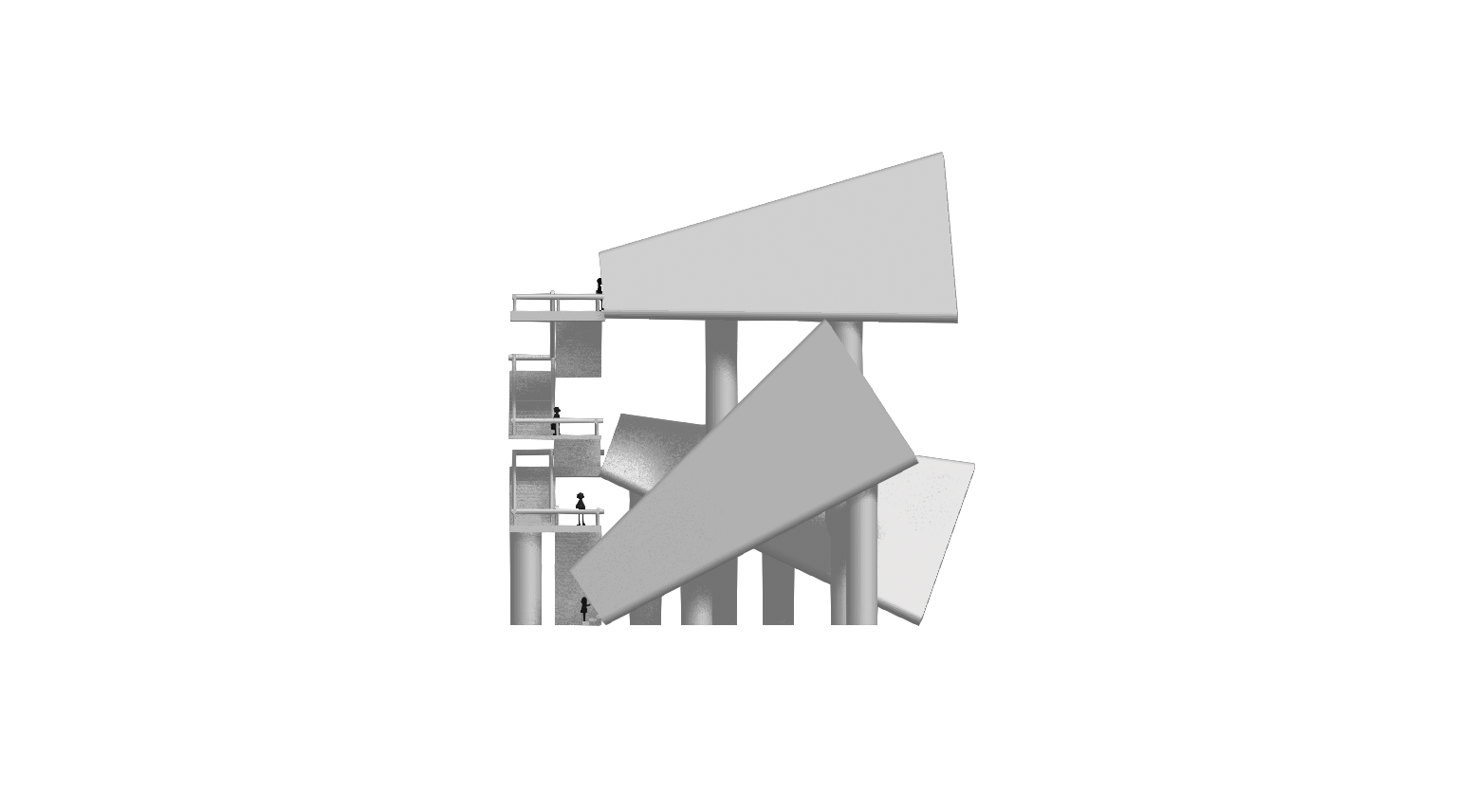Year One Studio
Gizmo Architecture
gizmo | noun | giz·mo | /ˈɡizmō/ | definition: ?
Our subject for this studio was “gizmo architecture”, a prompt which was kept vague on purpose. Professor Clark simply gave us the word gizmo to play with, and a general direction towards architecture that serves a function, and for us to determine the rest. He also gave us the task of designing a reclamation site near the Kankakee river.
Gizmo?
Functions?
Kankakee river?
With these topics and constraints, I began to explore how architecture can server implicit functions, like how structures can frame or curate experiences and views.
Kankakee site
Precedent study: Teshima Art Museum
Precedent study: WTC Oculus
Precedent study: Roden Crater
Physical Models
A series of experiments with different materials, modeling methods, and assemblies to achieve different effects. I primarily explored geometry, movement, and apertures as frames. view them below:
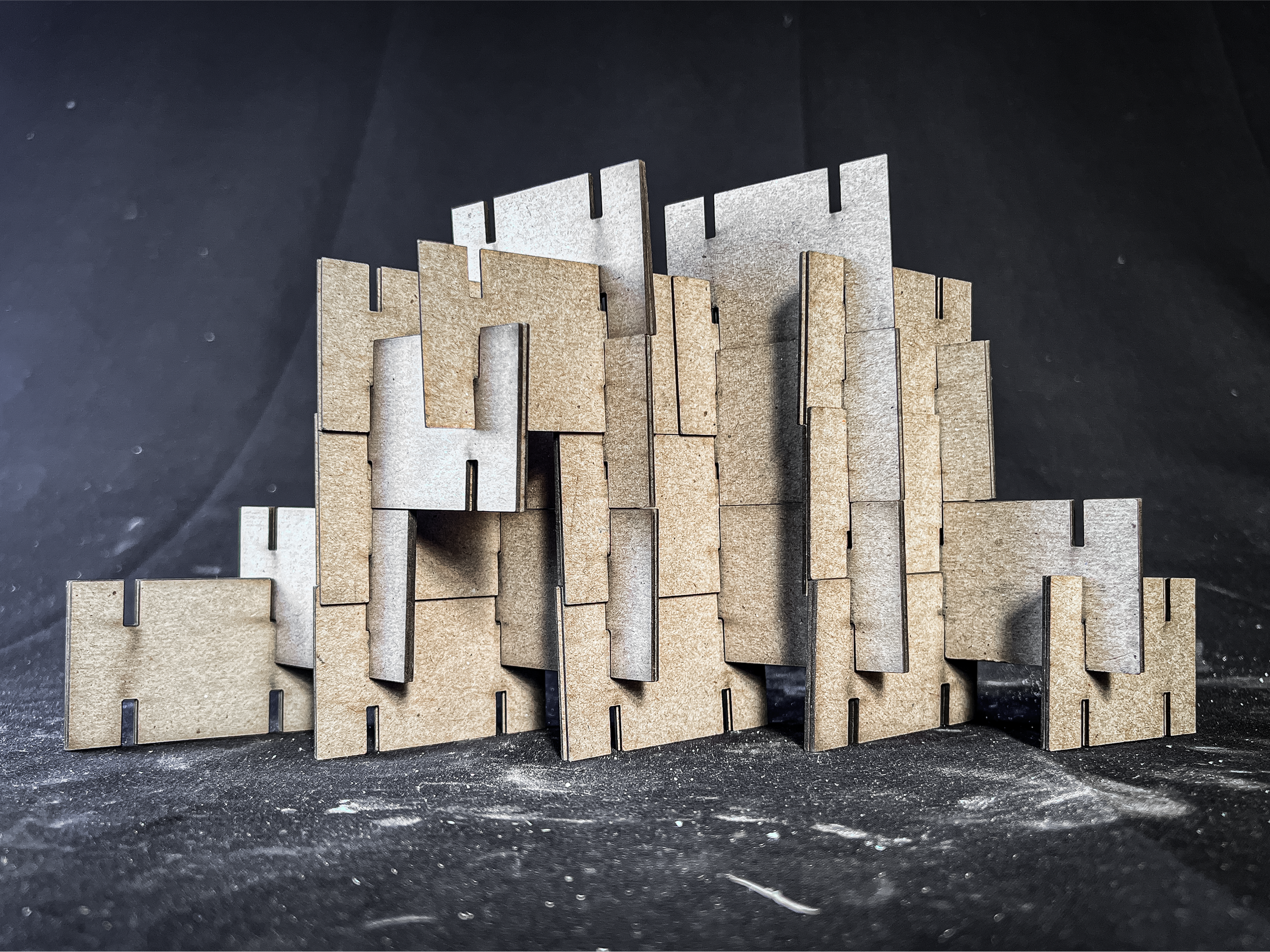
Modular wall made from puzzle - like panels, the loose joinery allowed for the wall to expand and contract like an accordion. (Laser cutter)

Contracted wall
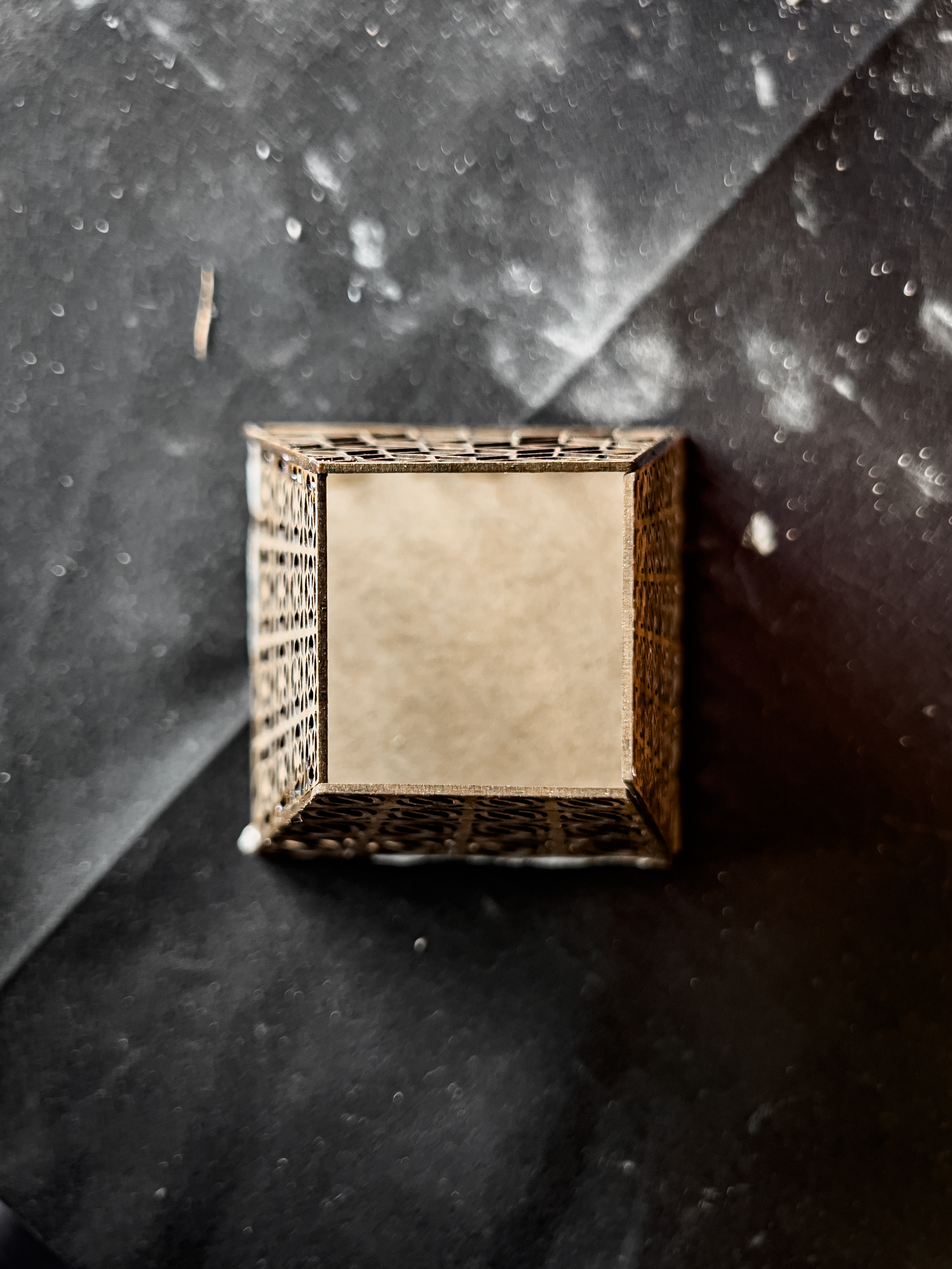
A cone like shape which was meant to frame one primary oculus through the top, and have perforated walls lining the sides. (Laser Cutter)
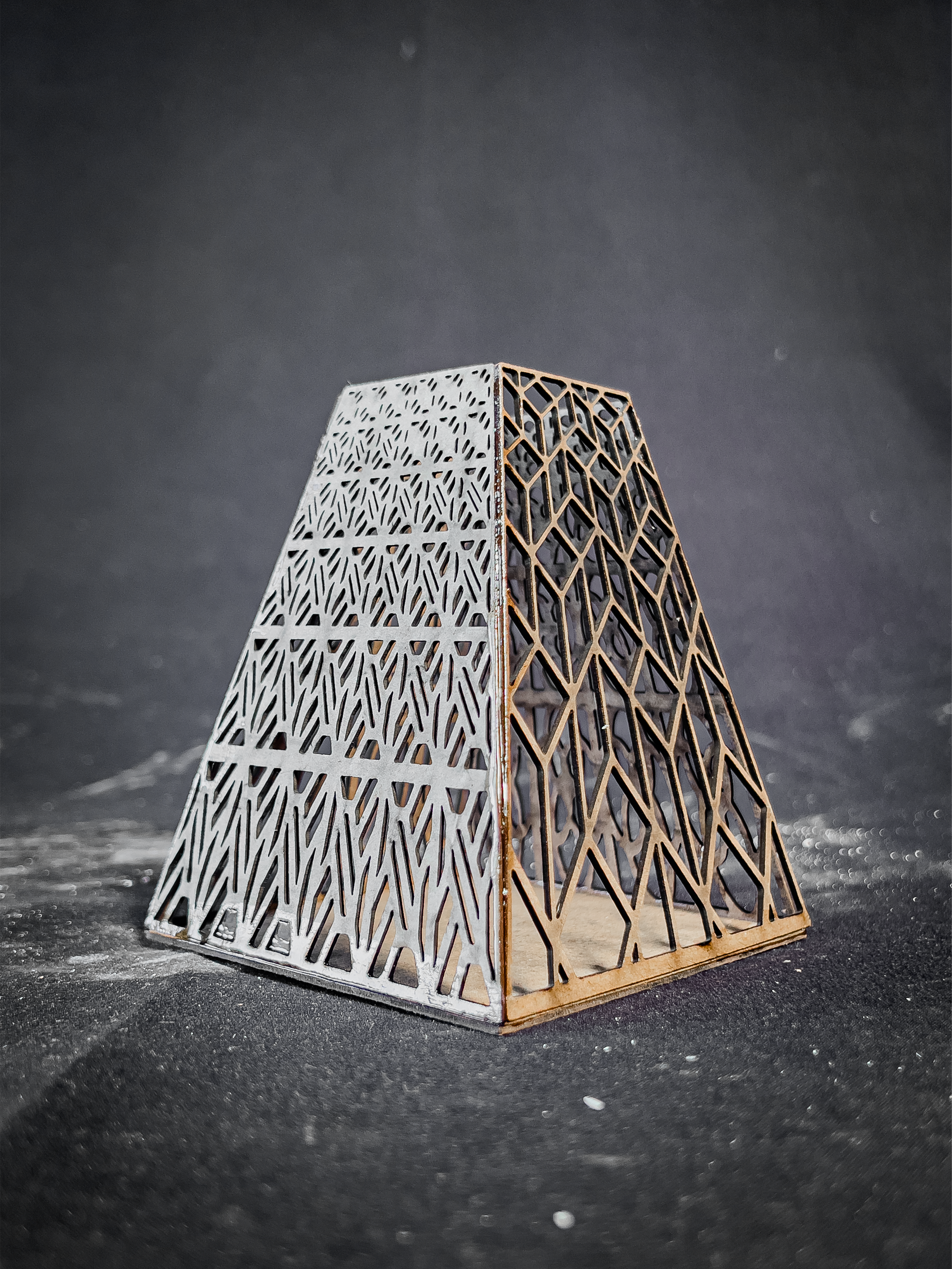
The process was inspired by the idea of placing a source of light in the center, and then projecting the perforated shapes through the shadows it casts.
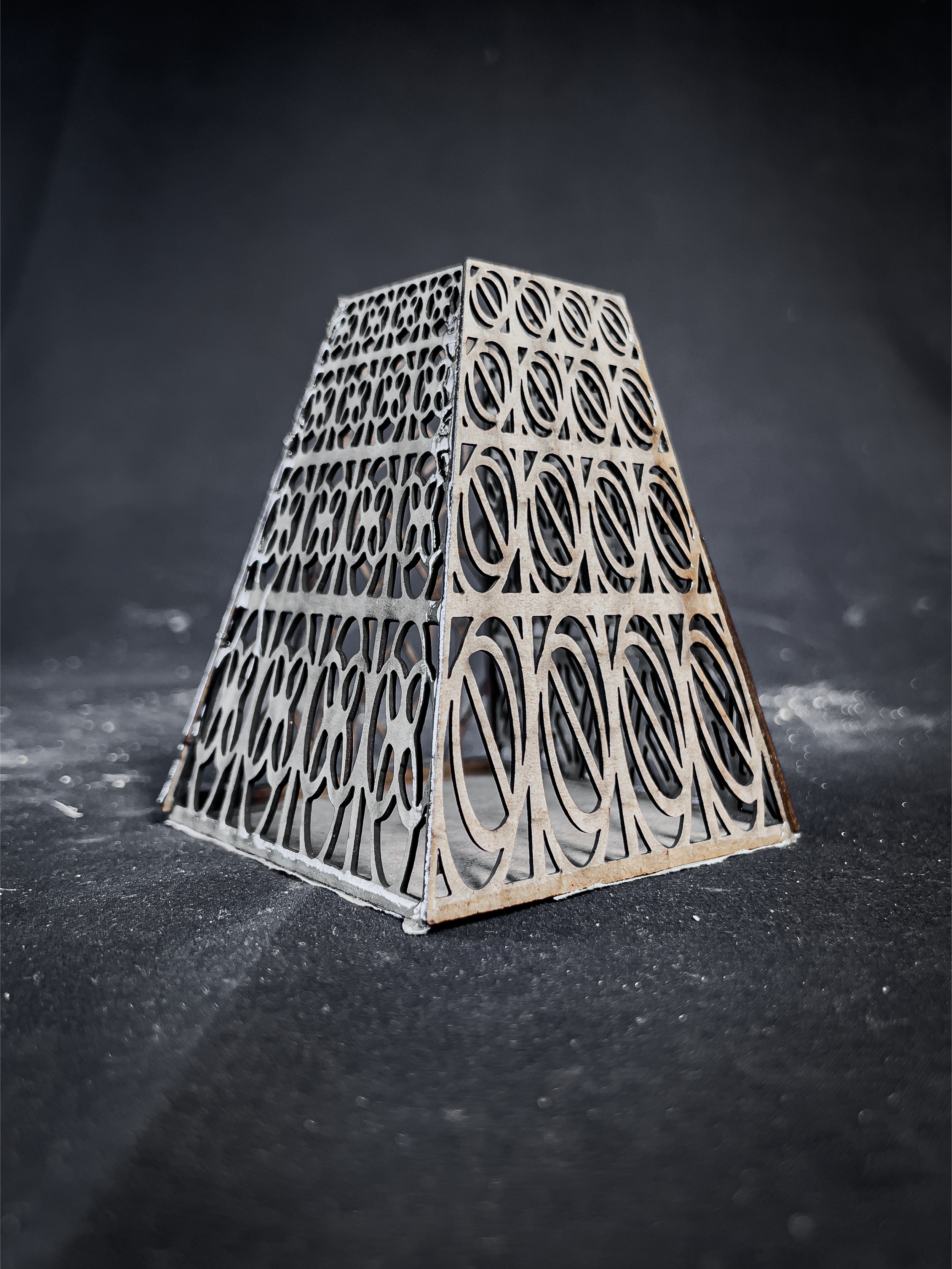
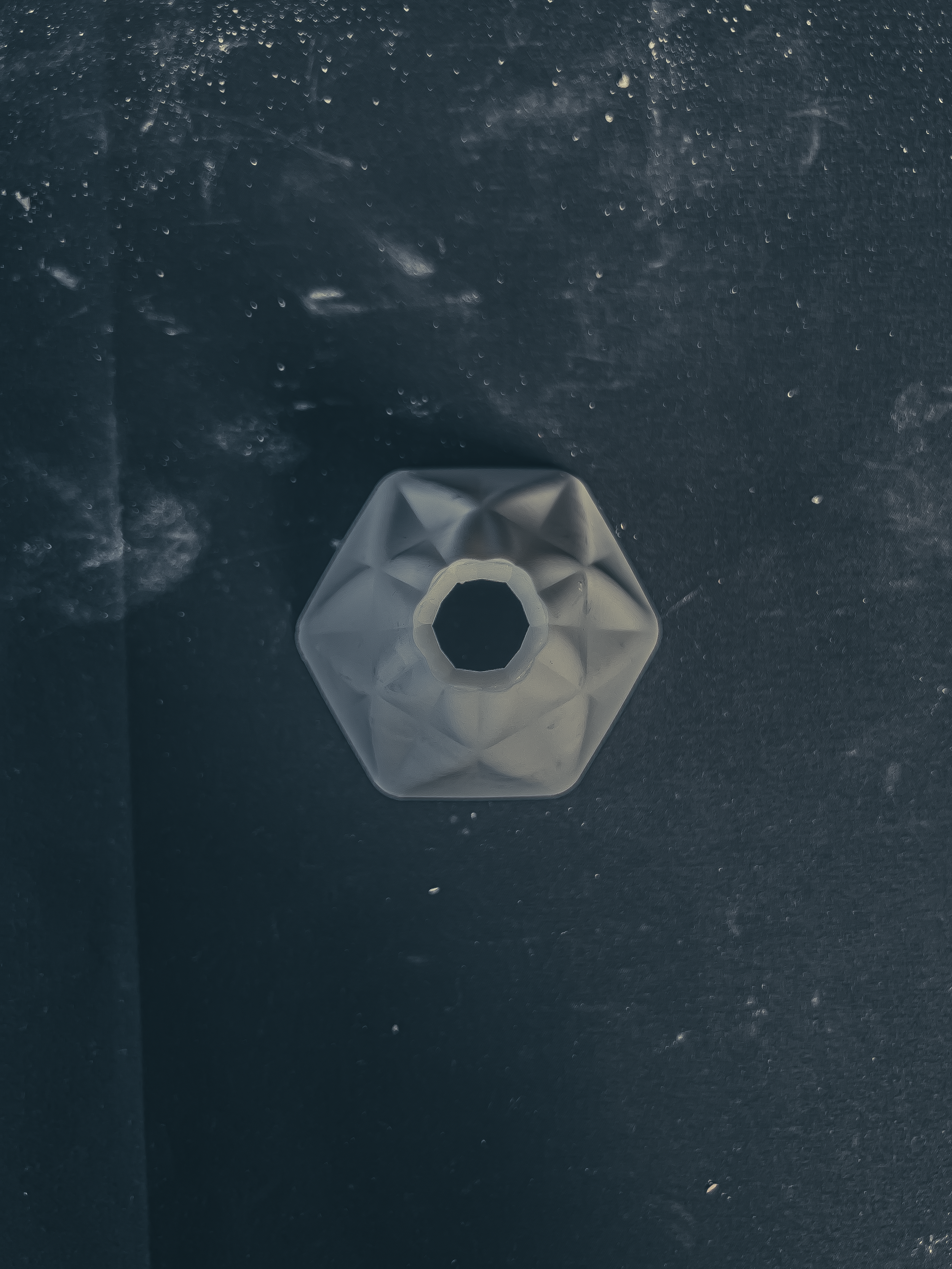
This was the climax of this portion of the project. I found that the idea of a flower shape created by duplicated and twisted geometry captured the organic, yet designed aesthetic I was gravitating towards.
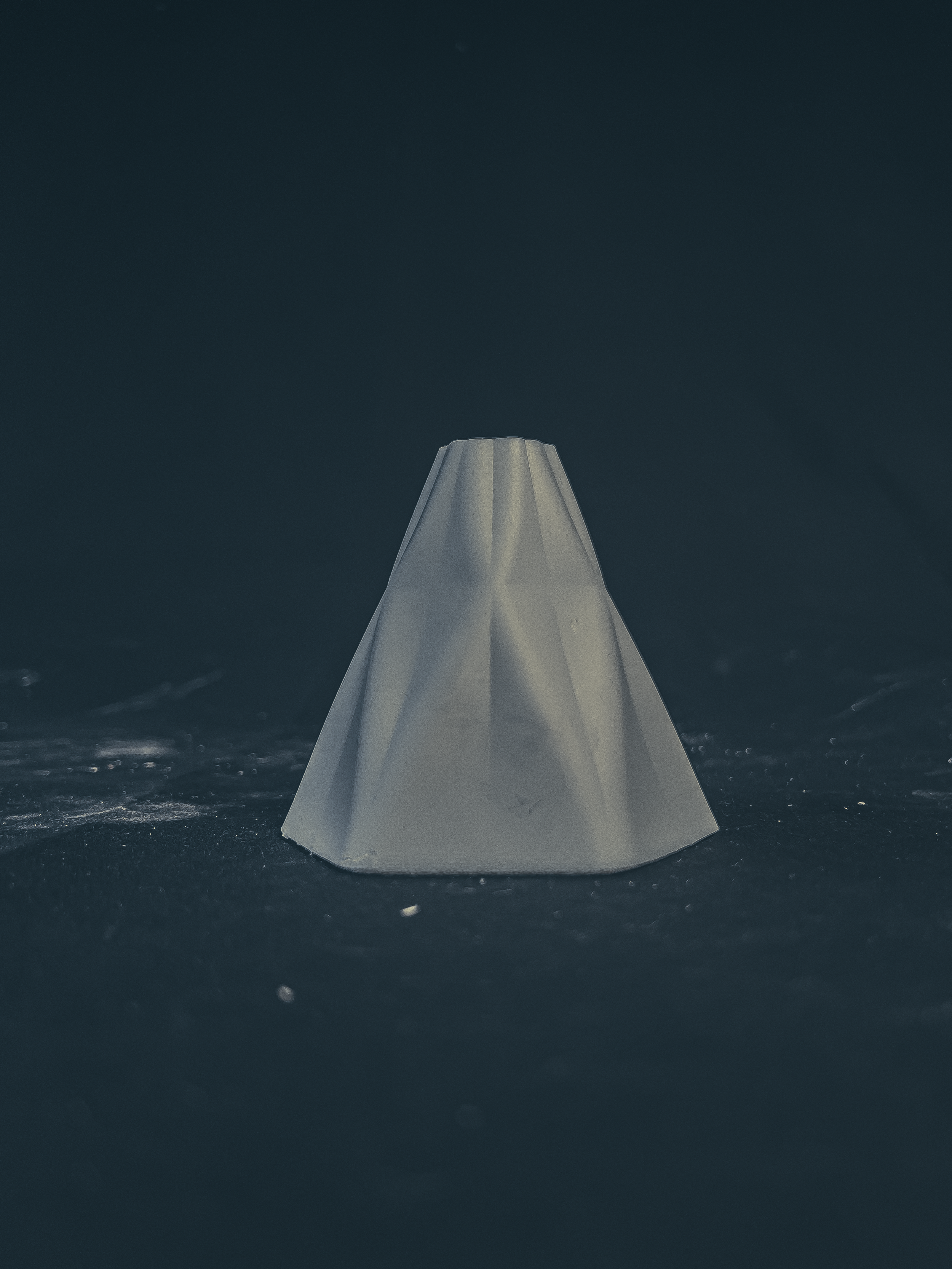
This also showed the effect of compression. By putting the oculus on the top, while compressing the walls as they reach up to it, there was a unique flattening effect of the view was to be captured.
My accidental Breakthrough
Using some scraps from my laser cut models, I played around with some shapes to facilitate the compression effect mentioned above. By separating a subject (the scale figure) from the viewer through a lens that compresses and releases, I was able to demonstrate a unique visual illusion of flattening the view as though it were an image.
Breakthrough
Breakthrough
Historical Precedent
Historical Precedent
Forced Perspective
My architecture history course also touched upon this concept with a brief mention of Borromini’s corridor that caught my attention. By carefully controlling the lines, proportions, and sightlines, Borromini compressed and then released the viewer’s gaze, creating a striking spatial illusion, making the statue inside appear huge.
Midterm Design
Midterm Design
I landed on my volcano-shaped flower geometry structure for my midterm review. To me, it captured the geometric aesthetic I wanted, while demonstrating the forced perspective compression I experimented with leading up to it. To create this model, I 3d modelled it in Rhino, then put it through a resin printer which granted me more refined edges and detail. After taking pictures of the model and processing them in photoshop, I fed them to Midjourney Ai and prompted countless iterations to achieve my desired render. The result isn’t exact, but it conveyed my design intentions visually.
FINAL
FINAL
Rhino
Spline.design
Photoshop
Gizmo
Perspective
Compression
Architecture for a function
Tri-fold
Tri-fold
The Gizmo (functional) aspect of my design was meant to serve the purpose of facilitating an experience, which was achieved by implementing forced perspective, where the structure frames views of the environment in the site.
Backside
Front/Inside
The Views
The 3d Model: Rhino & Spline.design
One of the deliverables for this project was a tourism inspired brochure four our destination. While I started with the traditional tri-fold rectangular brochure style, I determined that if I made my design the shape of a triangle, and had the informational flaps fold into the center, I could create a triangle framing my design!
In my presentation, I discussed the following:
Gizmo Arch., to me, represents the manner in which a structure interacts with its environment. Not necessarily that it directly moves or actively changes forms/executes explicit functions, but rather in how it can form an observer's experience given its otherwise natural surroundings. My structure illustrates this by not directly changing its environment, but rather manipulating the experience one can have in that environment. Its "gizmo" function is how it manipulates light, as well as distance and forced compression to frame the surrounding area.
The Physical Model: 3d Resin Print

